
Category of Astronomical Heritage: tangible immovable
Osservatorio Astronomico di Brera, Milano, Italy

Format: IAU - Outstanding Astronomical Heritage
Description
Geographical position - InfoTheme: Astronomy from the Renaissance to the mid-twentieth century
Entity: 215
Subentity: 1
Version: 3
Status: PUB
Date: 2022-01-06 23:54:24
Author(s): Gudrun Wolfschmidt
Osservatorio Astronomico di Brera, Via Brera, 28, 20121 Milano MI, Italy
Merate Observatory, Via E. Bianchi 46, 23807 Merate, Lecco, Italy
(45°42’21.96’’ N, 9°25’41.99’’ E)
Location - InfoTheme: Astronomy from the Renaissance to the mid-twentieth century
Entity: 215
Subentity: 1
Version: 2
Status: PUB
Date: 2021-10-28 00:34:35
Author(s): Gudrun Wolfschmidt
Latitude 45°28’17’’ N, Longitude 9°11’22’’ E, Elevation ...m above mean sea level.
IAU observatory code - InfoTheme: Astronomy from the Renaissance to the mid-twentieth century
Entity: 215
Subentity: 1
Version: 1
Status: PUB
Date: 2021-10-28 00:32:52
Author(s): Gudrun Wolfschmidt
027
Description of (scientific/cultural/natural) heritage - InfoTheme: Astronomy from the Renaissance to the mid-twentieth century
Entity: 215
Subentity: 1
Version: 2
Status: PUB
Date: 2022-01-06 23:55:04
Author(s): Gudrun Wolfschmidt
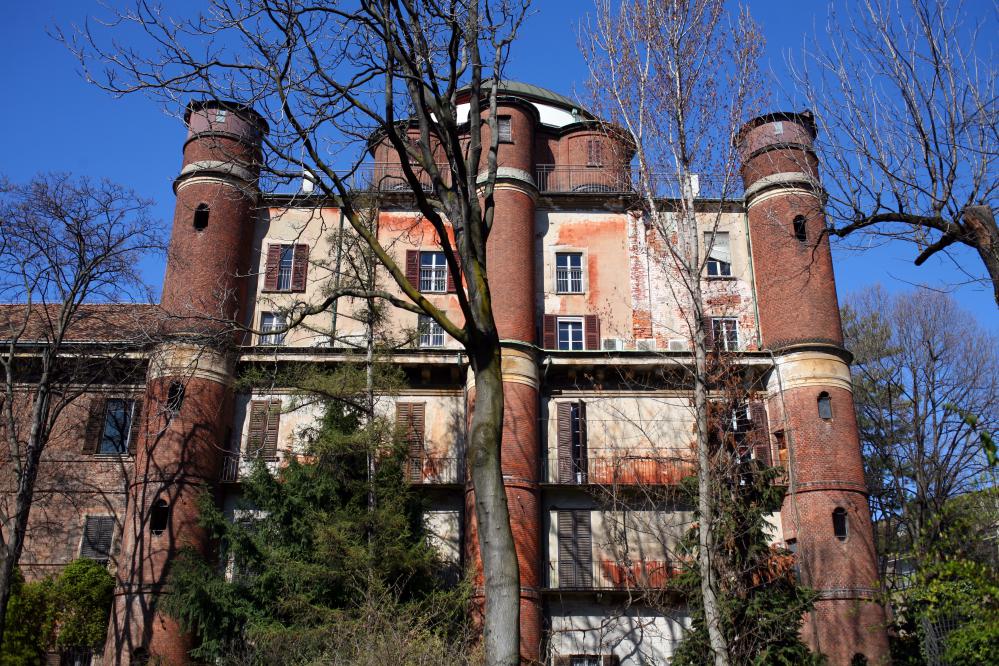
Fig. 1. Osservatorio Astronomico di Brera in Milan (1764), (Wikipedia, CC4, Paolobon140)
The Osservatorio Astronomico di Brera in Milan was founded in 1764 by Giuseppe Lodovico Lagrangia (Luigi La Grange) or Joseph-Louis Lagrange (1736--1813) and the Jesuit Giuseppe Ruggiero Boscovich (Rugjer Josip Boškovi’c) (1711--1787) and since then it is located in the Palazzo Brera, in Milan.
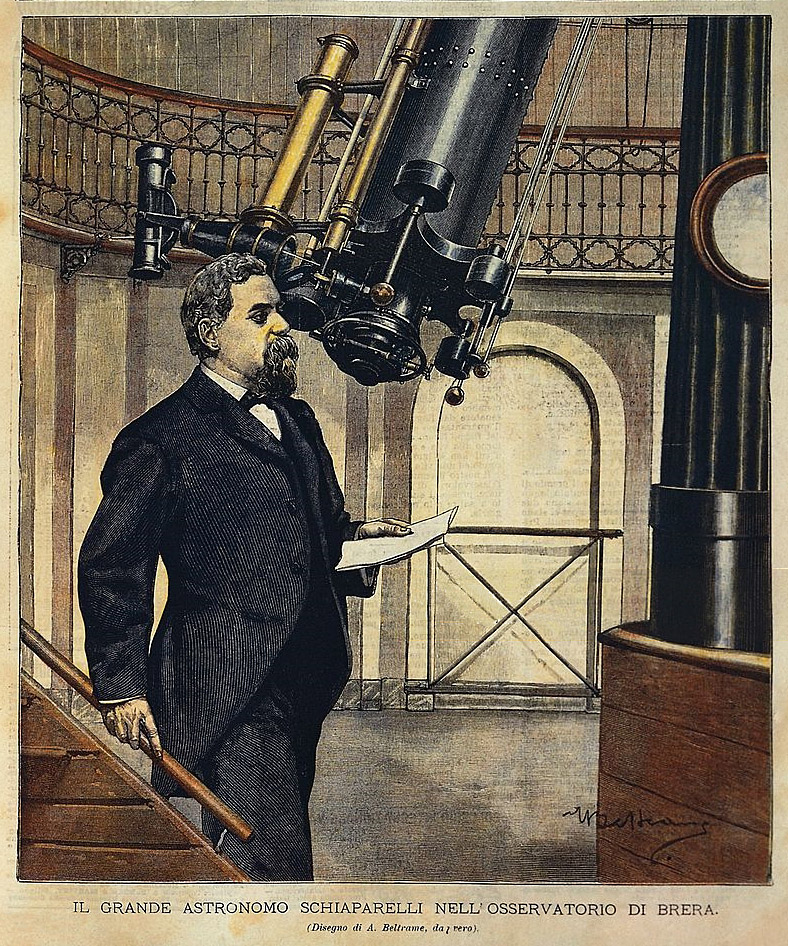
Fig. 2. Schiaparelli in Brera Observatory, drawing by Beltrame for the journal "La Domenica del Corriere" (1900), (Wikipedia)
Schiaparelli used the 8-inch refractng telescope for his astronomical research of binary stellar systems, comets, asteroids and planets of the Solar System, and particularly Mars.
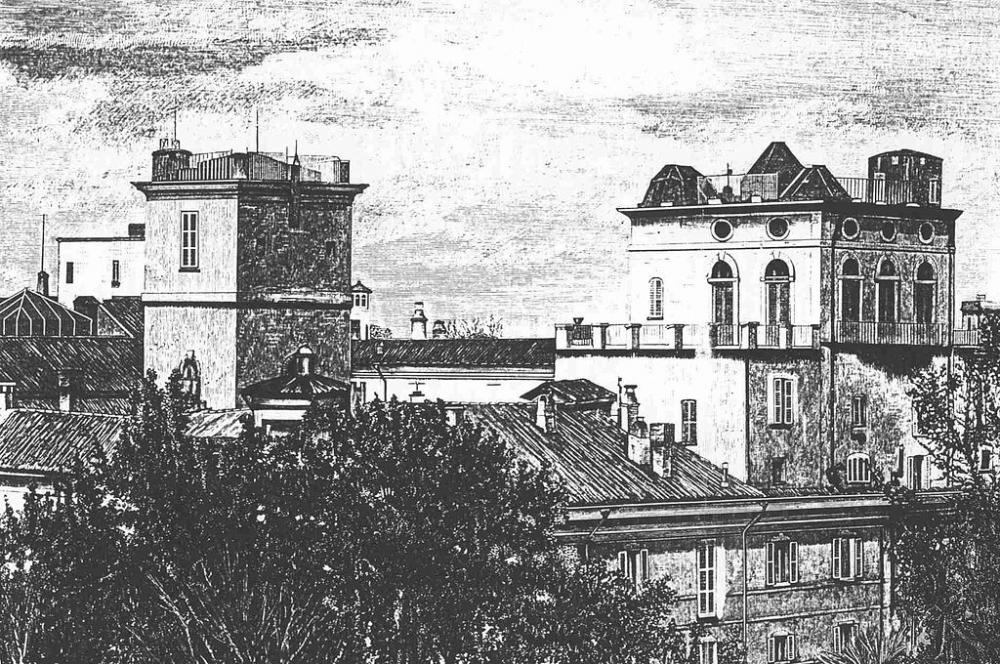
Fig. 3. Brera Specola, Boscovich (1872), seen from the South West side. On the left is the tower of the Starke meridian circle, obtained by readjusting the bell tower in 1833 (Wikipedia)
History - InfoTheme: Astronomy from the Renaissance to the mid-twentieth century
Entity: 215
Subentity: 1
Version: 4
Status: PUB
Date: 2022-01-07 00:19:01
Author(s): Gudrun Wolfschmidt
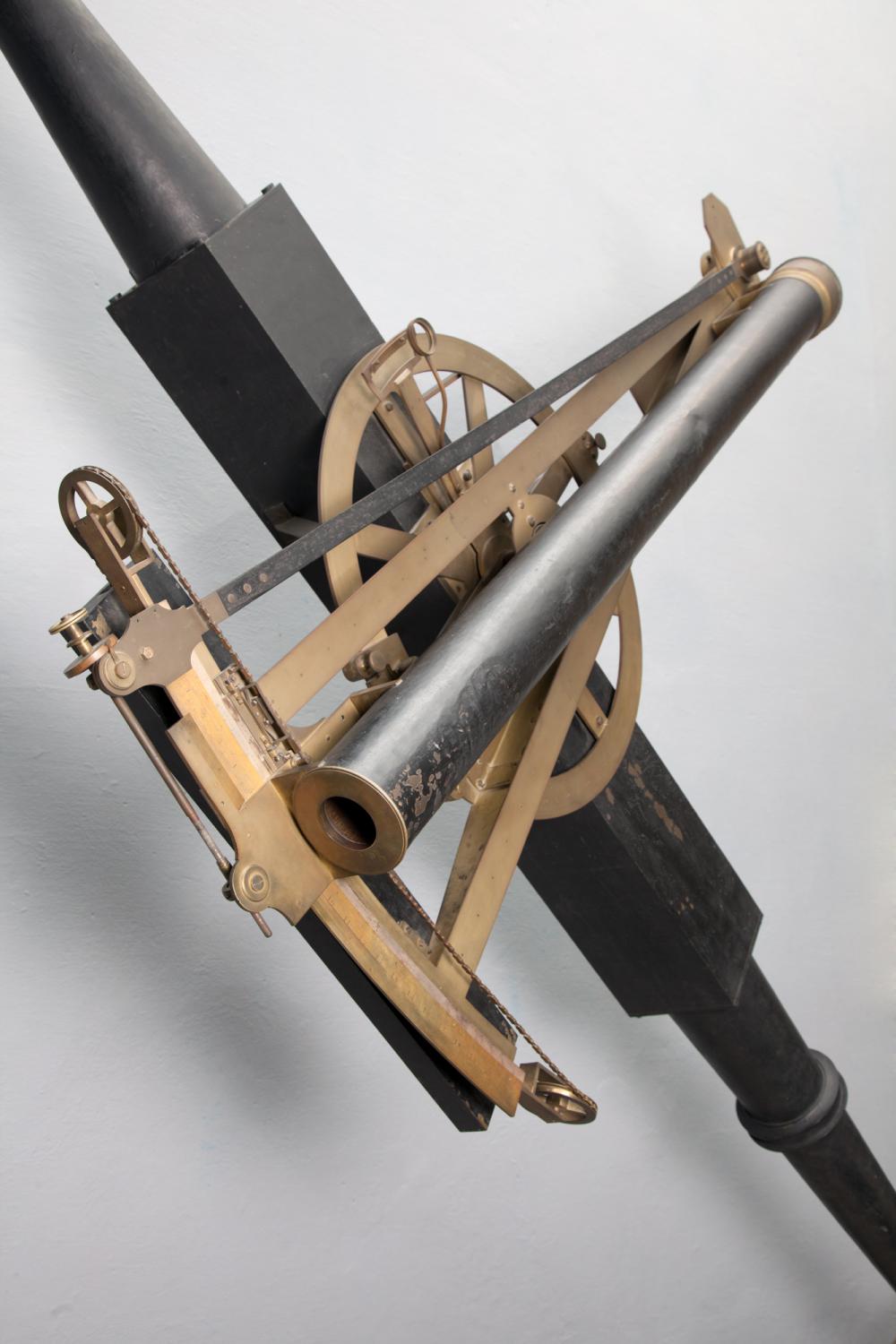
Fig. 4a. Sisson equatorial sector, Museum of Science and Technology in Milan (Wikipedia, CC4, Alessandro Nassiri)
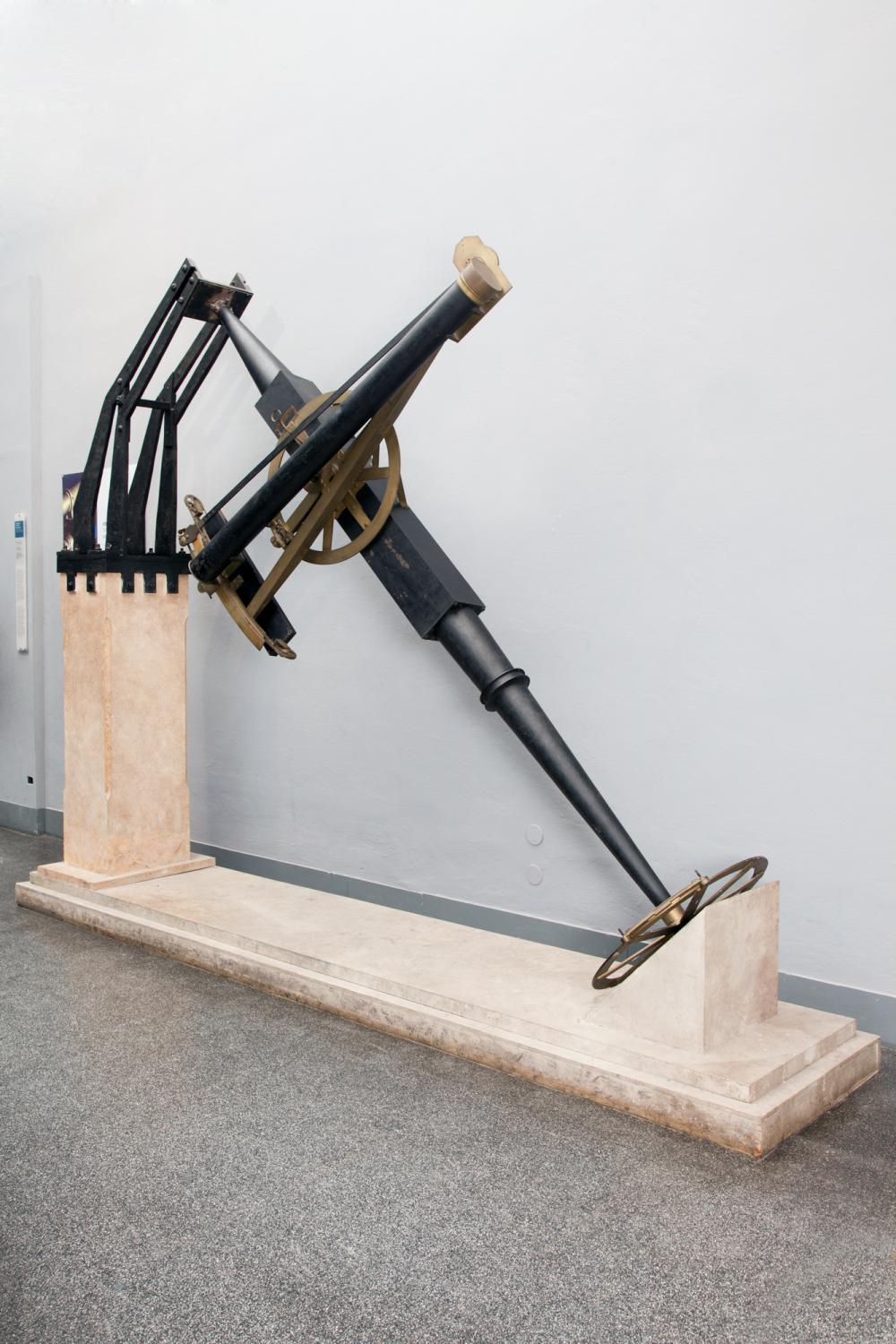
Fig. 4b. Equatorial sector, Museum of Science and Technology in Milan (Wikipedia, CC4, Alessandro Nassiri)
Instruments in Brera Observatory in Milan
- Large mural quadrant
- Sisson equatorial sector, Museum of Science and Technology in Milan
- Equatorial sector, Museum of Science and Technology in Milan
- Achromatic refracting telescope (aperture 7.6 and 9cm, focal lengths of 242 and 307cm), made by Dollond, mounting by Joseph Megele, a technician at the Observatory, 1778--1785
- Geodetic instruments for a surveying campaign (1786--1794) for a new map of Lombardy (1796)
- Repeating circle, made by Reichenbach of Munich (1808) for stellar catalogues
- Filar micrometers, used by Schiaparelli to measure the relative positions of double stars and the topography of Mars
- Magnetometer, made by Meyerstein (1835), measures the direction and the intensity of the magnetic field of the Earth. Brera was participating in the international "Magnetic Association" (Magnetischer Verein) of Göttingen, initiated by Humboldt, Gauß and Weber (1836--1841).
- Pendulum clocks, 18th to the first half of the 20th century
- Transit instruments (19th and 20th centuries), used for recording the time of transit of reference stars through the local meridian.
- 8-inch refracting telescope (focal length of 10.5 ft) with a mechanical clockwork, made by Merz of Munich (1862--1865), installed by Giovanni Virginio Schiaparelli in 1875 on the roof of Palazzo Brera (fifth floor) - Cupola Schiaparelli
- Spectrograph, installed with the 102-cm Zeiss reflecting telescope in 1925 in Merate.
Instruments in Villa San Rocco in Merate, Brianza (1923)
- 102-cm-Reflector (focal length 5m Newton, 16.25m Cassegrain), made by Carl Zeiss of Jena (1926), mounted as English Equatorial.
Since autumn 2003 it has been used for a long-term continuous programme of observation of visual binaries - with the speckle interferometry technique.
- 134-cm-Reflector (aluminium was used for the primary mirror), made by Ruths (1968)
- 50-cm-...., made by Marcon
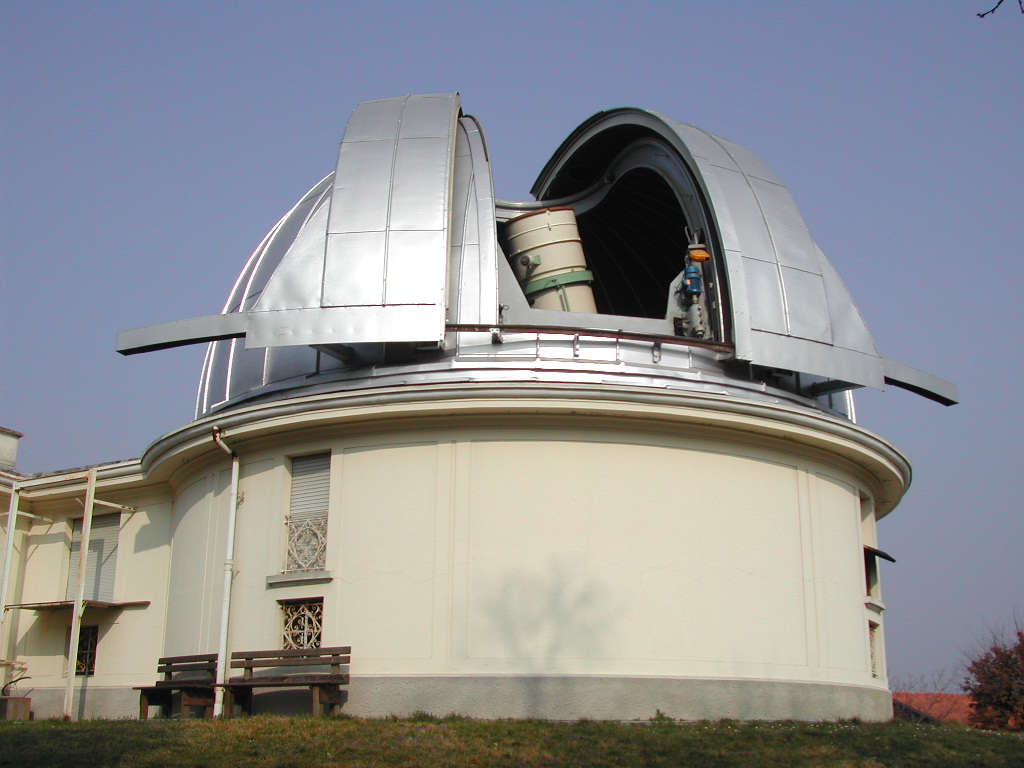
Fig. 5a. Dome of the 102-cm-Reflector in Merate (Wikipedia)
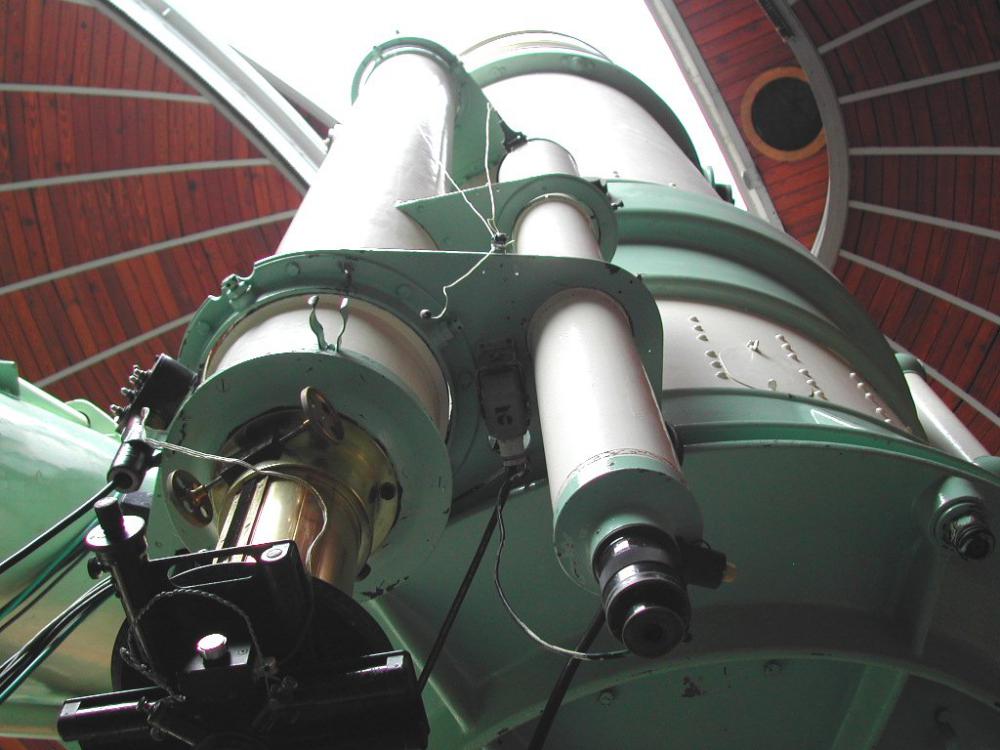
Fig. 5b. 102-cm-Reflector, made by Carl Zeiss of Jena in Merate (Wikipedia, CC2.5, CAV)
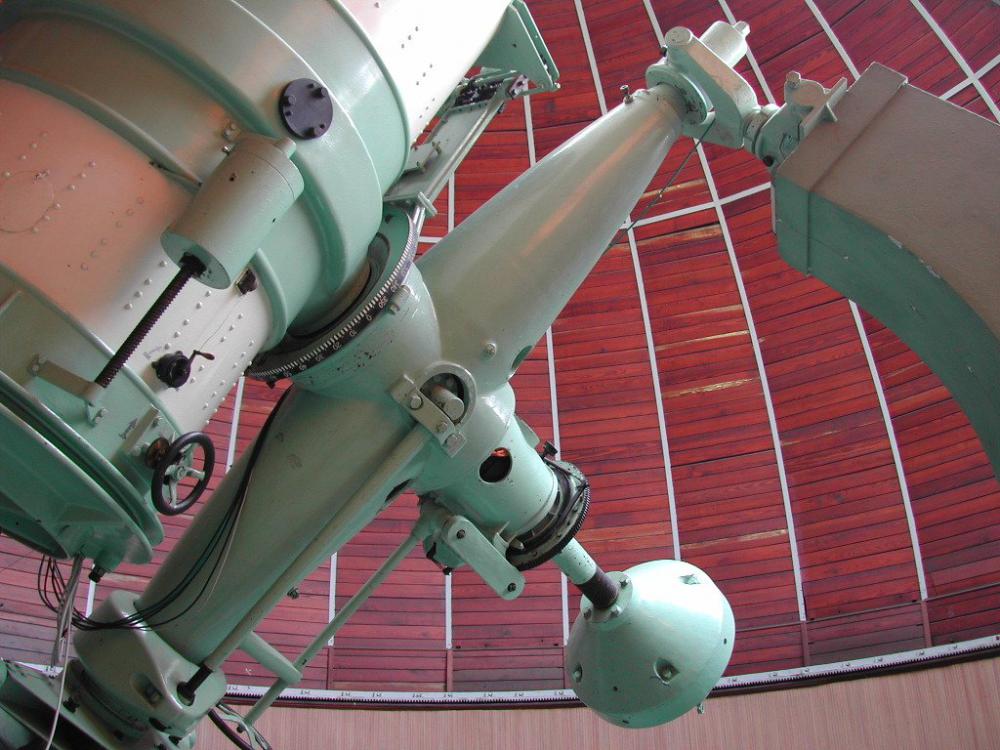
Fig. 5c. 102-cm-Reflector, made by Carl Zeiss of Jena in Merate (Wikipedia, CC2.5, CAV)
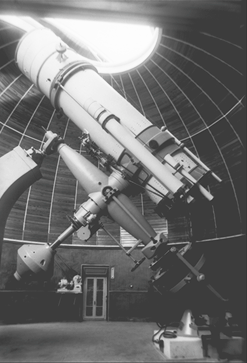
Fig. 5d. 102-cm-Reflector, made by Carl Zeiss of Jena in Merate (Wikipedia, Ulrico Hoepli, Milano, 1929)
Directors of Brera Observatory in Milan
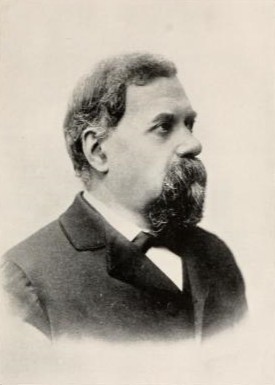
Fig. 6. Giovanni Virginio Schiaparelli (1835--1910) (Wikipedia)
- Giuseppe Ruggiero Boscovich (Rugjer Josip Boškovi’c) (1711--1787), director from 1764 to 1770
- ....
- Barnaba Oriani (1752--1832), director from 1802 to 1832
- ....
- Giovanni Virginio Schiaparelli (1835--1910), Brera astronomer in 1776, director from 1862 to 1900
- Giovanni Celoria (1842--1920), director from 1900 to 1917
- ....
- Emilio Bianchi (1875--1941), director from 1922 to 1941, he organized the construction of the new Merate Observatory
- ....
- ....
State of preservation - InfoTheme: Astronomy from the Renaissance to the mid-twentieth century
Entity: 215
Subentity: 1
Version: 3
Status: PUB
Date: 2022-12-09 08:50:18
Author(s): Gudrun Wolfschmidt
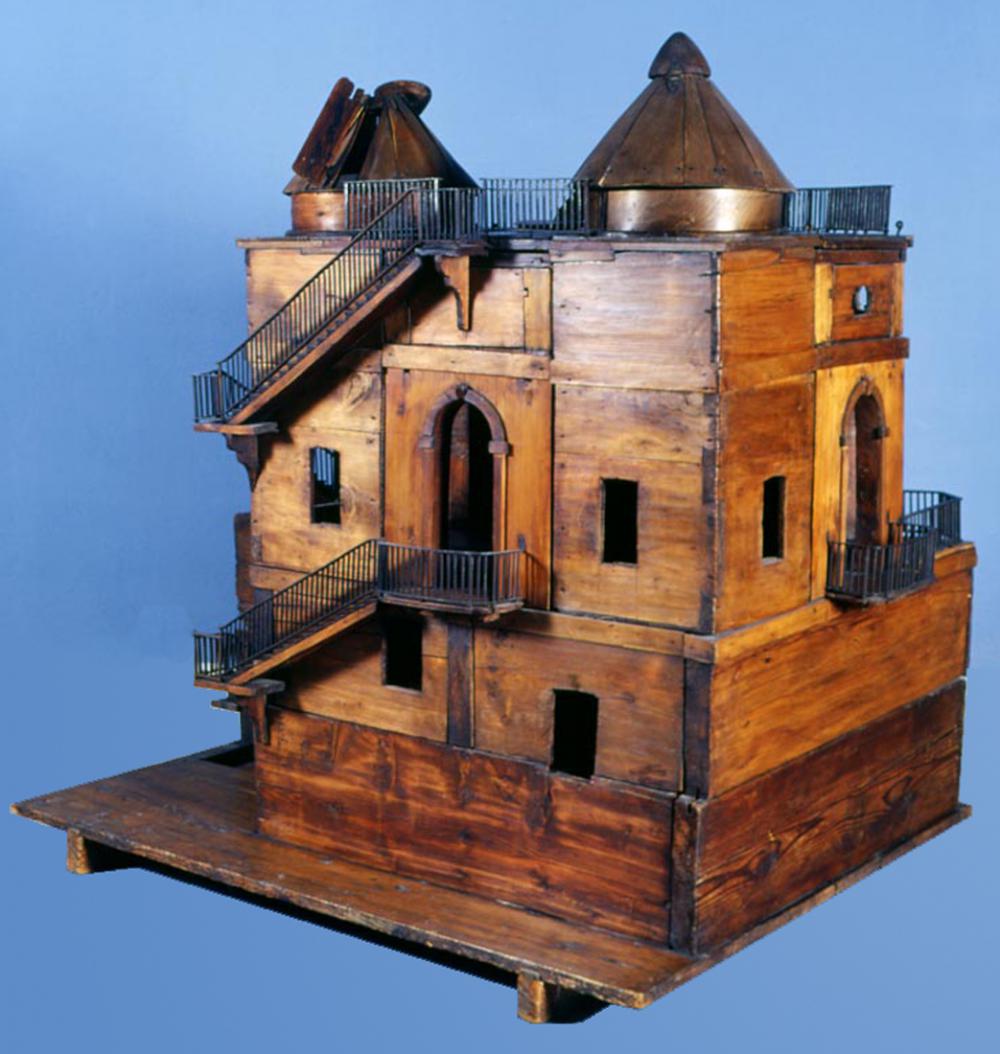
Fig. 7. Osservatorio Astronomico di Brera, model in the Museum of Science and Technology in Milan (Wikipedia, CC4, Boscovich Ruggero Giuseppe)
The Brera Observatory building in Milan is still very much in its original shape, well preserved. In 1999, the 8-inch refracting telescope and the Schiaparelli dome were fully restored to be operational, carried out by the ARASS-Brera Association, used for the public.
Brera has also a precious historical archive, and an old library.
The Brera Astronomical Museum has a valuable collection of astronomical instruments.
The completely renewed domes, the Zagar dome and the
Schiaperelli dome, are devoted to scientific conferences and to the public outreach.
Comparison with related/similar sites - InfoTheme: Astronomy from the Renaissance to the mid-twentieth century
Entity: 215
Subentity: 1
Version: 6
Status: PUB
Date: 2022-03-15 20:26:44
Author(s): Gudrun Wolfschmidt
Baroque Tower Observatories like Specola - Brera Observatory Milan (1764) can be found:
Clementinum Prague (1722), Zwehrenturm in Kassel (1710), Specola - Bologna Observatory (1712), Old Vienna Academy Observatory -- tower on the top (1755), Osservatorio Astronomico di Brera of the Jesuits in Milano (1762), Padova (Padua) Observatory (1767), Mannheim Observatory
Very large tower observatories are:
Kremsmünster, Austria (1749), Mathematical Tower of the University Breslau / Wrocław (1791), Bogotá Observatory, Columbia (1803).
The same type of Zeiss 1-m reflecting telescope was also installed at Hamburg-Bergedorf Observatory, and at Uccle, Bruxelles, the Royal Observatory of Belgium.
Threats or potential threats - InfoTheme: Astronomy from the Renaissance to the mid-twentieth century
Entity: 215
Subentity: 1
Version: 2
Status: PUB
Date: 2022-01-07 00:21:35
Author(s): Gudrun Wolfschmidt
no threats
Present use - InfoTheme: Astronomy from the Renaissance to the mid-twentieth century
Entity: 215
Subentity: 1
Version: 2
Status: PUB
Date: 2022-01-07 00:22:36
Author(s): Gudrun Wolfschmidt
The Astronomical Observatory of Brera (OAB) is still doing cutting edge astronomical research in the historical building. Since 2001, it has become part of the National Institute of Astrophysics (INAF).
In addition, there is the Brera Astronomical Museum.
Astronomical relevance today - InfoTheme: Astronomy from the Renaissance to the mid-twentieth century
Entity: 215
Subentity: 1
Version: 2
Status: PUB
Date: 2022-01-07 00:23:06
Author(s): Gudrun Wolfschmidt
The research of Brera covers planets, stars, from black holes to galaxies, from gamma-ray bursts to cosmlogy, developement of X-ray astronomy optics and, instrumentation for space missions.
In addition to the Brera Observatory in Milan, the Villa San Rocco in Merate, Brianza, was used as modern observatory in 1923.
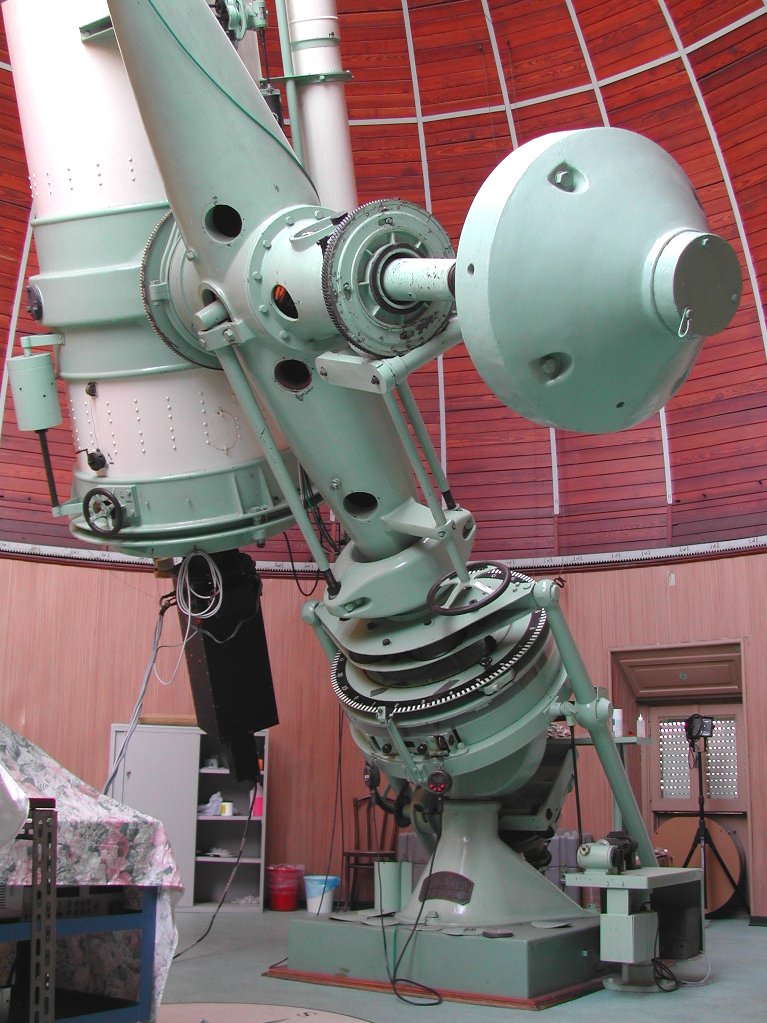
Fig. 8. 102-cm-Reflector, made by Carl Zeiss of Jena in Merate (Wikipedia, CC2.5, CAV)
References
Bibliography (books and published articles) - InfoTheme: Astronomy from the Renaissance to the mid-twentieth century
Entity: 215
Subentity: 1
Version: 5
Status: PUB
Date: 2022-03-15 20:28:02
Author(s): Gudrun Wolfschmidt
- AA.VV: Da Brera a Marte: storia dell’Osservatorio astronomico di Milano. Novara: Istituto Geografico De Agostini 1983.
- Bonoli, Fabrizio; Mandrino Agnese, Il "secolo breve" dell’Osservatorio Astronomico di Brera. In: L’Osservatorio Astronomico di Brera nel XX secolo. Le persone, i luoghi, la scienza, Trieste, Scienza Express edizioni, 2015, p. 21-65.
- Buccellati, G. & P. Tucci (eds.): I cieli di Brera. Milano: Università degli Studi 2000.
- Miotto, E.; Tagliaferri, G. & P. Tucci: La strumentazione nella storia dell’Osservatorio Astronomico di Brera, Università degli Studi di Milano. Milano: Unicopli 1989.
- King, Henry C. King: The History of the Telescope. London: Charles Griffin 1955, p. 347 (1-m Zeiss reflector). %https://books.google.com/books?id=KAWwzHlDVksC&pg=PA347
- Truffa, Giancarlo: personal communication (2022).
- Wolfschmidt, Gudrun: Internationality in the Astronomical Research (18th to 21st Century). Internationalität in der astronomischen Forschung vom 17. bis zum 21. Jahrhundert. In: Wolfschmidt, Gudrun (Hg.): Internationalität in der astronomischen Forschung (18. bis 21. Jahrhundert). Hamburg: tredition (Nuncius Hamburgensis; Band 49) 2020, p. 22-115, here: Der Magnetische Verein Göttingen (1836-1841), p. 35--40.
Links to external sites - InfoTheme: Astronomy from the Renaissance to the mid-twentieth century
Entity: 215
Subentity: 1
Version: 3
Status: PUB
Date: 2022-03-15 20:28:24
Author(s): Gudrun Wolfschmidt
- Osservatorio Astronomico di Brera
- Library and Archive in Brera
- Museo Astronomico di Brera (MusAB)
- Museo Astronomico di Brera (MusAB), Instrument gallery on the second floor of Palazzo Brera
- Brera Astronomical Observatory
Links to external on-line pictures - InfoTheme: Astronomy from the Renaissance to the mid-twentieth century
Entity: 215
Subentity: 1
Version: 1
Status: PUB
Date: 2021-10-28 00:32:53
Author(s): Gudrun Wolfschmidt
no information available
PrintPrint contents of 'Description' tab
(opens in a new window) Theme
Astronomy from the Renaissance to the mid-twentieth century
Case Study Navigation
- InfoTheme: Astronomy from the Renaissance to the mid-twentieth century
Entity: 215
Subentity: 1
Version: 3
Status: PUB
Date: 2022-01-06 23:54:24
Author(s): Gudrun Wolfschmidt
Osservatorio Astronomico di Brera, Via Brera, 28, 20121 Milano MI, Italy
Merate Observatory, Via E. Bianchi 46, 23807 Merate, Lecco, Italy
(45°42’21.96’’ N, 9°25’41.99’’ E)
Location - InfoTheme: Astronomy from the Renaissance to the mid-twentieth century
Entity: 215
Subentity: 1
Version: 2
Status: PUB
Date: 2021-10-28 00:34:35
Author(s): Gudrun Wolfschmidt
Latitude 45°28’17’’ N, Longitude 9°11’22’’ E, Elevation ...m above mean sea level.
IAU observatory code - InfoTheme: Astronomy from the Renaissance to the mid-twentieth century
Entity: 215
Subentity: 1
Version: 1
Status: PUB
Date: 2021-10-28 00:32:52
Author(s): Gudrun Wolfschmidt
027
Description of (scientific/cultural/natural) heritage - InfoTheme: Astronomy from the Renaissance to the mid-twentieth century
Entity: 215
Subentity: 1
Version: 2
Status: PUB
Date: 2022-01-06 23:55:04
Author(s): Gudrun Wolfschmidt

Fig. 1. Osservatorio Astronomico di Brera in Milan (1764), (Wikipedia, CC4, Paolobon140)
The Osservatorio Astronomico di Brera in Milan was founded in 1764 by Giuseppe Lodovico Lagrangia (Luigi La Grange) or Joseph-Louis Lagrange (1736--1813) and the Jesuit Giuseppe Ruggiero Boscovich (Rugjer Josip Boškovi’c) (1711--1787) and since then it is located in the Palazzo Brera, in Milan.

Fig. 2. Schiaparelli in Brera Observatory, drawing by Beltrame for the journal "La Domenica del Corriere" (1900), (Wikipedia)
Schiaparelli used the 8-inch refractng telescope for his astronomical research of binary stellar systems, comets, asteroids and planets of the Solar System, and particularly Mars.

Fig. 3. Brera Specola, Boscovich (1872), seen from the South West side. On the left is the tower of the Starke meridian circle, obtained by readjusting the bell tower in 1833 (Wikipedia)
History - InfoTheme: Astronomy from the Renaissance to the mid-twentieth century
Entity: 215
Subentity: 1
Version: 4
Status: PUB
Date: 2022-01-07 00:19:01
Author(s): Gudrun Wolfschmidt

Fig. 4a. Sisson equatorial sector, Museum of Science and Technology in Milan (Wikipedia, CC4, Alessandro Nassiri)

Fig. 4b. Equatorial sector, Museum of Science and Technology in Milan (Wikipedia, CC4, Alessandro Nassiri)
Instruments in Brera Observatory in Milan
- Large mural quadrant
- Sisson equatorial sector, Museum of Science and Technology in Milan
- Equatorial sector, Museum of Science and Technology in Milan
- Achromatic refracting telescope (aperture 7.6 and 9cm, focal lengths of 242 and 307cm), made by Dollond, mounting by Joseph Megele, a technician at the Observatory, 1778--1785
- Geodetic instruments for a surveying campaign (1786--1794) for a new map of Lombardy (1796)
- Repeating circle, made by Reichenbach of Munich (1808) for stellar catalogues
- Filar micrometers, used by Schiaparelli to measure the relative positions of double stars and the topography of Mars
- Magnetometer, made by Meyerstein (1835), measures the direction and the intensity of the magnetic field of the Earth. Brera was participating in the international "Magnetic Association" (Magnetischer Verein) of Göttingen, initiated by Humboldt, Gauß and Weber (1836--1841).
- Pendulum clocks, 18th to the first half of the 20th century
- Transit instruments (19th and 20th centuries), used for recording the time of transit of reference stars through the local meridian.
- 8-inch refracting telescope (focal length of 10.5 ft) with a mechanical clockwork, made by Merz of Munich (1862--1865), installed by Giovanni Virginio Schiaparelli in 1875 on the roof of Palazzo Brera (fifth floor) - Cupola Schiaparelli
- Spectrograph, installed with the 102-cm Zeiss reflecting telescope in 1925 in Merate.
Instruments in Villa San Rocco in Merate, Brianza (1923)
- 102-cm-Reflector (focal length 5m Newton, 16.25m Cassegrain), made by Carl Zeiss of Jena (1926), mounted as English Equatorial.
Since autumn 2003 it has been used for a long-term continuous programme of observation of visual binaries - with the speckle interferometry technique.
- 134-cm-Reflector (aluminium was used for the primary mirror), made by Ruths (1968)
- 50-cm-...., made by Marcon

Fig. 5a. Dome of the 102-cm-Reflector in Merate (Wikipedia)

Fig. 5b. 102-cm-Reflector, made by Carl Zeiss of Jena in Merate (Wikipedia, CC2.5, CAV)

Fig. 5c. 102-cm-Reflector, made by Carl Zeiss of Jena in Merate (Wikipedia, CC2.5, CAV)

Fig. 5d. 102-cm-Reflector, made by Carl Zeiss of Jena in Merate (Wikipedia, Ulrico Hoepli, Milano, 1929)
Directors of Brera Observatory in Milan

Fig. 6. Giovanni Virginio Schiaparelli (1835--1910) (Wikipedia)
- Giuseppe Ruggiero Boscovich (Rugjer Josip Boškovi’c) (1711--1787), director from 1764 to 1770
- ....
- Barnaba Oriani (1752--1832), director from 1802 to 1832
- ....
- Giovanni Virginio Schiaparelli (1835--1910), Brera astronomer in 1776, director from 1862 to 1900
- Giovanni Celoria (1842--1920), director from 1900 to 1917
- ....
- Emilio Bianchi (1875--1941), director from 1922 to 1941, he organized the construction of the new Merate Observatory
- ....
- ....
State of preservation - InfoTheme: Astronomy from the Renaissance to the mid-twentieth century
Entity: 215
Subentity: 1
Version: 3
Status: PUB
Date: 2022-12-09 08:50:18
Author(s): Gudrun Wolfschmidt

Fig. 7. Osservatorio Astronomico di Brera, model in the Museum of Science and Technology in Milan (Wikipedia, CC4, Boscovich Ruggero Giuseppe)
The Brera Observatory building in Milan is still very much in its original shape, well preserved. In 1999, the 8-inch refracting telescope and the Schiaparelli dome were fully restored to be operational, carried out by the ARASS-Brera Association, used for the public.
Brera has also a precious historical archive, and an old library.
The Brera Astronomical Museum has a valuable collection of astronomical instruments.
The completely renewed domes, the Zagar dome and the
Schiaperelli dome, are devoted to scientific conferences and to the public outreach.
Comparison with related/similar sites - InfoTheme: Astronomy from the Renaissance to the mid-twentieth century
Entity: 215
Subentity: 1
Version: 6
Status: PUB
Date: 2022-03-15 20:26:44
Author(s): Gudrun Wolfschmidt
Baroque Tower Observatories like Specola - Brera Observatory Milan (1764) can be found:
Clementinum Prague (1722), Zwehrenturm in Kassel (1710), Specola - Bologna Observatory (1712), Old Vienna Academy Observatory -- tower on the top (1755), Osservatorio Astronomico di Brera of the Jesuits in Milano (1762), Padova (Padua) Observatory (1767), Mannheim Observatory
Very large tower observatories are:
Kremsmünster, Austria (1749), Mathematical Tower of the University Breslau / Wrocław (1791), Bogotá Observatory, Columbia (1803).
The same type of Zeiss 1-m reflecting telescope was also installed at Hamburg-Bergedorf Observatory, and at Uccle, Bruxelles, the Royal Observatory of Belgium.
Threats or potential threats - InfoTheme: Astronomy from the Renaissance to the mid-twentieth century
Entity: 215
Subentity: 1
Version: 2
Status: PUB
Date: 2022-01-07 00:21:35
Author(s): Gudrun Wolfschmidt
no threats
Present use - InfoTheme: Astronomy from the Renaissance to the mid-twentieth century
Entity: 215
Subentity: 1
Version: 2
Status: PUB
Date: 2022-01-07 00:22:36
Author(s): Gudrun Wolfschmidt
The Astronomical Observatory of Brera (OAB) is still doing cutting edge astronomical research in the historical building. Since 2001, it has become part of the National Institute of Astrophysics (INAF).
In addition, there is the Brera Astronomical Museum.
Astronomical relevance today - InfoTheme: Astronomy from the Renaissance to the mid-twentieth century
Entity: 215
Subentity: 1
Version: 2
Status: PUB
Date: 2022-01-07 00:23:06
Author(s): Gudrun Wolfschmidt
The research of Brera covers planets, stars, from black holes to galaxies, from gamma-ray bursts to cosmlogy, developement of X-ray astronomy optics and, instrumentation for space missions.
In addition to the Brera Observatory in Milan, the Villa San Rocco in Merate, Brianza, was used as modern observatory in 1923.

Fig. 8. 102-cm-Reflector, made by Carl Zeiss of Jena in Merate (Wikipedia, CC2.5, CAV)
References
Bibliography (books and published articles) - InfoTheme: Astronomy from the Renaissance to the mid-twentieth century
Entity: 215
Subentity: 1
Version: 5
Status: PUB
Date: 2022-03-15 20:28:02
Author(s): Gudrun Wolfschmidt
- AA.VV: Da Brera a Marte: storia dell’Osservatorio astronomico di Milano. Novara: Istituto Geografico De Agostini 1983.
- Bonoli, Fabrizio; Mandrino Agnese, Il "secolo breve" dell’Osservatorio Astronomico di Brera. In: L’Osservatorio Astronomico di Brera nel XX secolo. Le persone, i luoghi, la scienza, Trieste, Scienza Express edizioni, 2015, p. 21-65.
- Buccellati, G. & P. Tucci (eds.): I cieli di Brera. Milano: Università degli Studi 2000.
- Miotto, E.; Tagliaferri, G. & P. Tucci: La strumentazione nella storia dell’Osservatorio Astronomico di Brera, Università degli Studi di Milano. Milano: Unicopli 1989.
- King, Henry C. King: The History of the Telescope. London: Charles Griffin 1955, p. 347 (1-m Zeiss reflector). %https://books.google.com/books?id=KAWwzHlDVksC&pg=PA347
- Truffa, Giancarlo: personal communication (2022).
- Wolfschmidt, Gudrun: Internationality in the Astronomical Research (18th to 21st Century). Internationalität in der astronomischen Forschung vom 17. bis zum 21. Jahrhundert. In: Wolfschmidt, Gudrun (Hg.): Internationalität in der astronomischen Forschung (18. bis 21. Jahrhundert). Hamburg: tredition (Nuncius Hamburgensis; Band 49) 2020, p. 22-115, here: Der Magnetische Verein Göttingen (1836-1841), p. 35--40.
Links to external sites - InfoTheme: Astronomy from the Renaissance to the mid-twentieth century
Entity: 215
Subentity: 1
Version: 3
Status: PUB
Date: 2022-03-15 20:28:24
Author(s): Gudrun Wolfschmidt
- Osservatorio Astronomico di Brera
- Library and Archive in Brera
- Museo Astronomico di Brera (MusAB)
- Museo Astronomico di Brera (MusAB), Instrument gallery on the second floor of Palazzo Brera
- Brera Astronomical Observatory
Links to external on-line pictures - InfoTheme: Astronomy from the Renaissance to the mid-twentieth century
Entity: 215
Subentity: 1
Version: 1
Status: PUB
Date: 2021-10-28 00:32:53
Author(s): Gudrun Wolfschmidt
no information available
PrintPrint contents of 'Description' tab
(opens in a new window) Theme
Astronomy from the Renaissance to the mid-twentieth century
Case Study Navigation
- InfoTheme: Astronomy from the Renaissance to the mid-twentieth century
Entity: 215
Subentity: 1
Version: 2
Status: PUB
Date: 2021-10-28 00:34:35
Author(s): Gudrun Wolfschmidt
Latitude 45°28’17’’ N, Longitude 9°11’22’’ E, Elevation ...m above mean sea level.
IAU observatory code - InfoTheme: Astronomy from the Renaissance to the mid-twentieth century
Entity: 215
Subentity: 1
Version: 1
Status: PUB
Date: 2021-10-28 00:32:52
Author(s): Gudrun Wolfschmidt
027
Description of (scientific/cultural/natural) heritage - InfoTheme: Astronomy from the Renaissance to the mid-twentieth century
Entity: 215
Subentity: 1
Version: 2
Status: PUB
Date: 2022-01-06 23:55:04
Author(s): Gudrun Wolfschmidt

Fig. 1. Osservatorio Astronomico di Brera in Milan (1764), (Wikipedia, CC4, Paolobon140)
The Osservatorio Astronomico di Brera in Milan was founded in 1764 by Giuseppe Lodovico Lagrangia (Luigi La Grange) or Joseph-Louis Lagrange (1736--1813) and the Jesuit Giuseppe Ruggiero Boscovich (Rugjer Josip Boškovi’c) (1711--1787) and since then it is located in the Palazzo Brera, in Milan.

Fig. 2. Schiaparelli in Brera Observatory, drawing by Beltrame for the journal "La Domenica del Corriere" (1900), (Wikipedia)
Schiaparelli used the 8-inch refractng telescope for his astronomical research of binary stellar systems, comets, asteroids and planets of the Solar System, and particularly Mars.

Fig. 3. Brera Specola, Boscovich (1872), seen from the South West side. On the left is the tower of the Starke meridian circle, obtained by readjusting the bell tower in 1833 (Wikipedia)
History - InfoTheme: Astronomy from the Renaissance to the mid-twentieth century
Entity: 215
Subentity: 1
Version: 4
Status: PUB
Date: 2022-01-07 00:19:01
Author(s): Gudrun Wolfschmidt

Fig. 4a. Sisson equatorial sector, Museum of Science and Technology in Milan (Wikipedia, CC4, Alessandro Nassiri)

Fig. 4b. Equatorial sector, Museum of Science and Technology in Milan (Wikipedia, CC4, Alessandro Nassiri)
Instruments in Brera Observatory in Milan
- Large mural quadrant
- Sisson equatorial sector, Museum of Science and Technology in Milan
- Equatorial sector, Museum of Science and Technology in Milan
- Achromatic refracting telescope (aperture 7.6 and 9cm, focal lengths of 242 and 307cm), made by Dollond, mounting by Joseph Megele, a technician at the Observatory, 1778--1785
- Geodetic instruments for a surveying campaign (1786--1794) for a new map of Lombardy (1796)
- Repeating circle, made by Reichenbach of Munich (1808) for stellar catalogues
- Filar micrometers, used by Schiaparelli to measure the relative positions of double stars and the topography of Mars
- Magnetometer, made by Meyerstein (1835), measures the direction and the intensity of the magnetic field of the Earth. Brera was participating in the international "Magnetic Association" (Magnetischer Verein) of Göttingen, initiated by Humboldt, Gauß and Weber (1836--1841).
- Pendulum clocks, 18th to the first half of the 20th century
- Transit instruments (19th and 20th centuries), used for recording the time of transit of reference stars through the local meridian.
- 8-inch refracting telescope (focal length of 10.5 ft) with a mechanical clockwork, made by Merz of Munich (1862--1865), installed by Giovanni Virginio Schiaparelli in 1875 on the roof of Palazzo Brera (fifth floor) - Cupola Schiaparelli
- Spectrograph, installed with the 102-cm Zeiss reflecting telescope in 1925 in Merate.
Instruments in Villa San Rocco in Merate, Brianza (1923)
- 102-cm-Reflector (focal length 5m Newton, 16.25m Cassegrain), made by Carl Zeiss of Jena (1926), mounted as English Equatorial.
Since autumn 2003 it has been used for a long-term continuous programme of observation of visual binaries - with the speckle interferometry technique.
- 134-cm-Reflector (aluminium was used for the primary mirror), made by Ruths (1968)
- 50-cm-...., made by Marcon

Fig. 5a. Dome of the 102-cm-Reflector in Merate (Wikipedia)

Fig. 5b. 102-cm-Reflector, made by Carl Zeiss of Jena in Merate (Wikipedia, CC2.5, CAV)

Fig. 5c. 102-cm-Reflector, made by Carl Zeiss of Jena in Merate (Wikipedia, CC2.5, CAV)

Fig. 5d. 102-cm-Reflector, made by Carl Zeiss of Jena in Merate (Wikipedia, Ulrico Hoepli, Milano, 1929)
Directors of Brera Observatory in Milan

Fig. 6. Giovanni Virginio Schiaparelli (1835--1910) (Wikipedia)
- Giuseppe Ruggiero Boscovich (Rugjer Josip Boškovi’c) (1711--1787), director from 1764 to 1770
- ....
- Barnaba Oriani (1752--1832), director from 1802 to 1832
- ....
- Giovanni Virginio Schiaparelli (1835--1910), Brera astronomer in 1776, director from 1862 to 1900
- Giovanni Celoria (1842--1920), director from 1900 to 1917
- ....
- Emilio Bianchi (1875--1941), director from 1922 to 1941, he organized the construction of the new Merate Observatory
- ....
- ....
State of preservation - InfoTheme: Astronomy from the Renaissance to the mid-twentieth century
Entity: 215
Subentity: 1
Version: 3
Status: PUB
Date: 2022-12-09 08:50:18
Author(s): Gudrun Wolfschmidt

Fig. 7. Osservatorio Astronomico di Brera, model in the Museum of Science and Technology in Milan (Wikipedia, CC4, Boscovich Ruggero Giuseppe)
The Brera Observatory building in Milan is still very much in its original shape, well preserved. In 1999, the 8-inch refracting telescope and the Schiaparelli dome were fully restored to be operational, carried out by the ARASS-Brera Association, used for the public.
Brera has also a precious historical archive, and an old library.
The Brera Astronomical Museum has a valuable collection of astronomical instruments.
The completely renewed domes, the Zagar dome and the
Schiaperelli dome, are devoted to scientific conferences and to the public outreach.
Comparison with related/similar sites - InfoTheme: Astronomy from the Renaissance to the mid-twentieth century
Entity: 215
Subentity: 1
Version: 6
Status: PUB
Date: 2022-03-15 20:26:44
Author(s): Gudrun Wolfschmidt
Baroque Tower Observatories like Specola - Brera Observatory Milan (1764) can be found:
Clementinum Prague (1722), Zwehrenturm in Kassel (1710), Specola - Bologna Observatory (1712), Old Vienna Academy Observatory -- tower on the top (1755), Osservatorio Astronomico di Brera of the Jesuits in Milano (1762), Padova (Padua) Observatory (1767), Mannheim Observatory
Very large tower observatories are:
Kremsmünster, Austria (1749), Mathematical Tower of the University Breslau / Wrocław (1791), Bogotá Observatory, Columbia (1803).
The same type of Zeiss 1-m reflecting telescope was also installed at Hamburg-Bergedorf Observatory, and at Uccle, Bruxelles, the Royal Observatory of Belgium.
Threats or potential threats - InfoTheme: Astronomy from the Renaissance to the mid-twentieth century
Entity: 215
Subentity: 1
Version: 2
Status: PUB
Date: 2022-01-07 00:21:35
Author(s): Gudrun Wolfschmidt
no threats
Present use - InfoTheme: Astronomy from the Renaissance to the mid-twentieth century
Entity: 215
Subentity: 1
Version: 2
Status: PUB
Date: 2022-01-07 00:22:36
Author(s): Gudrun Wolfschmidt
The Astronomical Observatory of Brera (OAB) is still doing cutting edge astronomical research in the historical building. Since 2001, it has become part of the National Institute of Astrophysics (INAF).
In addition, there is the Brera Astronomical Museum.
Astronomical relevance today - InfoTheme: Astronomy from the Renaissance to the mid-twentieth century
Entity: 215
Subentity: 1
Version: 2
Status: PUB
Date: 2022-01-07 00:23:06
Author(s): Gudrun Wolfschmidt
The research of Brera covers planets, stars, from black holes to galaxies, from gamma-ray bursts to cosmlogy, developement of X-ray astronomy optics and, instrumentation for space missions.
In addition to the Brera Observatory in Milan, the Villa San Rocco in Merate, Brianza, was used as modern observatory in 1923.

Fig. 8. 102-cm-Reflector, made by Carl Zeiss of Jena in Merate (Wikipedia, CC2.5, CAV)
References
Bibliography (books and published articles) - InfoTheme: Astronomy from the Renaissance to the mid-twentieth century
Entity: 215
Subentity: 1
Version: 5
Status: PUB
Date: 2022-03-15 20:28:02
Author(s): Gudrun Wolfschmidt
- AA.VV: Da Brera a Marte: storia dell’Osservatorio astronomico di Milano. Novara: Istituto Geografico De Agostini 1983.
- Bonoli, Fabrizio; Mandrino Agnese, Il "secolo breve" dell’Osservatorio Astronomico di Brera. In: L’Osservatorio Astronomico di Brera nel XX secolo. Le persone, i luoghi, la scienza, Trieste, Scienza Express edizioni, 2015, p. 21-65.
- Buccellati, G. & P. Tucci (eds.): I cieli di Brera. Milano: Università degli Studi 2000.
- Miotto, E.; Tagliaferri, G. & P. Tucci: La strumentazione nella storia dell’Osservatorio Astronomico di Brera, Università degli Studi di Milano. Milano: Unicopli 1989.
- King, Henry C. King: The History of the Telescope. London: Charles Griffin 1955, p. 347 (1-m Zeiss reflector). %https://books.google.com/books?id=KAWwzHlDVksC&pg=PA347
- Truffa, Giancarlo: personal communication (2022).
- Wolfschmidt, Gudrun: Internationality in the Astronomical Research (18th to 21st Century). Internationalität in der astronomischen Forschung vom 17. bis zum 21. Jahrhundert. In: Wolfschmidt, Gudrun (Hg.): Internationalität in der astronomischen Forschung (18. bis 21. Jahrhundert). Hamburg: tredition (Nuncius Hamburgensis; Band 49) 2020, p. 22-115, here: Der Magnetische Verein Göttingen (1836-1841), p. 35--40.
Links to external sites - InfoTheme: Astronomy from the Renaissance to the mid-twentieth century
Entity: 215
Subentity: 1
Version: 3
Status: PUB
Date: 2022-03-15 20:28:24
Author(s): Gudrun Wolfschmidt
- Osservatorio Astronomico di Brera
- Library and Archive in Brera
- Museo Astronomico di Brera (MusAB)
- Museo Astronomico di Brera (MusAB), Instrument gallery on the second floor of Palazzo Brera
- Brera Astronomical Observatory
Links to external on-line pictures - InfoTheme: Astronomy from the Renaissance to the mid-twentieth century
Entity: 215
Subentity: 1
Version: 1
Status: PUB
Date: 2021-10-28 00:32:53
Author(s): Gudrun Wolfschmidt
no information available
PrintPrint contents of 'Description' tab
(opens in a new window) Theme
Astronomy from the Renaissance to the mid-twentieth century
Case Study Navigation
- InfoTheme: Astronomy from the Renaissance to the mid-twentieth century
Entity: 215
Subentity: 1
Version: 1
Status: PUB
Date: 2021-10-28 00:32:52
Author(s): Gudrun Wolfschmidt
027
Description of (scientific/cultural/natural) heritage - InfoTheme: Astronomy from the Renaissance to the mid-twentieth century
Entity: 215
Subentity: 1
Version: 2
Status: PUB
Date: 2022-01-06 23:55:04
Author(s): Gudrun Wolfschmidt

Fig. 1. Osservatorio Astronomico di Brera in Milan (1764), (Wikipedia, CC4, Paolobon140)
The Osservatorio Astronomico di Brera in Milan was founded in 1764 by Giuseppe Lodovico Lagrangia (Luigi La Grange) or Joseph-Louis Lagrange (1736--1813) and the Jesuit Giuseppe Ruggiero Boscovich (Rugjer Josip Boškovi’c) (1711--1787) and since then it is located in the Palazzo Brera, in Milan.

Fig. 2. Schiaparelli in Brera Observatory, drawing by Beltrame for the journal "La Domenica del Corriere" (1900), (Wikipedia)
Schiaparelli used the 8-inch refractng telescope for his astronomical research of binary stellar systems, comets, asteroids and planets of the Solar System, and particularly Mars.

Fig. 3. Brera Specola, Boscovich (1872), seen from the South West side. On the left is the tower of the Starke meridian circle, obtained by readjusting the bell tower in 1833 (Wikipedia)
History - InfoTheme: Astronomy from the Renaissance to the mid-twentieth century
Entity: 215
Subentity: 1
Version: 4
Status: PUB
Date: 2022-01-07 00:19:01
Author(s): Gudrun Wolfschmidt

Fig. 4a. Sisson equatorial sector, Museum of Science and Technology in Milan (Wikipedia, CC4, Alessandro Nassiri)

Fig. 4b. Equatorial sector, Museum of Science and Technology in Milan (Wikipedia, CC4, Alessandro Nassiri)
Instruments in Brera Observatory in Milan
- Large mural quadrant
- Sisson equatorial sector, Museum of Science and Technology in Milan
- Equatorial sector, Museum of Science and Technology in Milan
- Achromatic refracting telescope (aperture 7.6 and 9cm, focal lengths of 242 and 307cm), made by Dollond, mounting by Joseph Megele, a technician at the Observatory, 1778--1785
- Geodetic instruments for a surveying campaign (1786--1794) for a new map of Lombardy (1796)
- Repeating circle, made by Reichenbach of Munich (1808) for stellar catalogues
- Filar micrometers, used by Schiaparelli to measure the relative positions of double stars and the topography of Mars
- Magnetometer, made by Meyerstein (1835), measures the direction and the intensity of the magnetic field of the Earth. Brera was participating in the international "Magnetic Association" (Magnetischer Verein) of Göttingen, initiated by Humboldt, Gauß and Weber (1836--1841).
- Pendulum clocks, 18th to the first half of the 20th century
- Transit instruments (19th and 20th centuries), used for recording the time of transit of reference stars through the local meridian.
- 8-inch refracting telescope (focal length of 10.5 ft) with a mechanical clockwork, made by Merz of Munich (1862--1865), installed by Giovanni Virginio Schiaparelli in 1875 on the roof of Palazzo Brera (fifth floor) - Cupola Schiaparelli
- Spectrograph, installed with the 102-cm Zeiss reflecting telescope in 1925 in Merate.
Instruments in Villa San Rocco in Merate, Brianza (1923)
- 102-cm-Reflector (focal length 5m Newton, 16.25m Cassegrain), made by Carl Zeiss of Jena (1926), mounted as English Equatorial.
Since autumn 2003 it has been used for a long-term continuous programme of observation of visual binaries - with the speckle interferometry technique.
- 134-cm-Reflector (aluminium was used for the primary mirror), made by Ruths (1968)
- 50-cm-...., made by Marcon

Fig. 5a. Dome of the 102-cm-Reflector in Merate (Wikipedia)

Fig. 5b. 102-cm-Reflector, made by Carl Zeiss of Jena in Merate (Wikipedia, CC2.5, CAV)

Fig. 5c. 102-cm-Reflector, made by Carl Zeiss of Jena in Merate (Wikipedia, CC2.5, CAV)

Fig. 5d. 102-cm-Reflector, made by Carl Zeiss of Jena in Merate (Wikipedia, Ulrico Hoepli, Milano, 1929)
Directors of Brera Observatory in Milan

Fig. 6. Giovanni Virginio Schiaparelli (1835--1910) (Wikipedia)
- Giuseppe Ruggiero Boscovich (Rugjer Josip Boškovi’c) (1711--1787), director from 1764 to 1770
- ....
- Barnaba Oriani (1752--1832), director from 1802 to 1832
- ....
- Giovanni Virginio Schiaparelli (1835--1910), Brera astronomer in 1776, director from 1862 to 1900
- Giovanni Celoria (1842--1920), director from 1900 to 1917
- ....
- Emilio Bianchi (1875--1941), director from 1922 to 1941, he organized the construction of the new Merate Observatory
- ....
- ....
State of preservation - InfoTheme: Astronomy from the Renaissance to the mid-twentieth century
Entity: 215
Subentity: 1
Version: 3
Status: PUB
Date: 2022-12-09 08:50:18
Author(s): Gudrun Wolfschmidt

Fig. 7. Osservatorio Astronomico di Brera, model in the Museum of Science and Technology in Milan (Wikipedia, CC4, Boscovich Ruggero Giuseppe)
The Brera Observatory building in Milan is still very much in its original shape, well preserved. In 1999, the 8-inch refracting telescope and the Schiaparelli dome were fully restored to be operational, carried out by the ARASS-Brera Association, used for the public.
Brera has also a precious historical archive, and an old library.
The Brera Astronomical Museum has a valuable collection of astronomical instruments.
The completely renewed domes, the Zagar dome and the
Schiaperelli dome, are devoted to scientific conferences and to the public outreach.
Comparison with related/similar sites - InfoTheme: Astronomy from the Renaissance to the mid-twentieth century
Entity: 215
Subentity: 1
Version: 6
Status: PUB
Date: 2022-03-15 20:26:44
Author(s): Gudrun Wolfschmidt
Baroque Tower Observatories like Specola - Brera Observatory Milan (1764) can be found:
Clementinum Prague (1722), Zwehrenturm in Kassel (1710), Specola - Bologna Observatory (1712), Old Vienna Academy Observatory -- tower on the top (1755), Osservatorio Astronomico di Brera of the Jesuits in Milano (1762), Padova (Padua) Observatory (1767), Mannheim Observatory
Very large tower observatories are:
Kremsmünster, Austria (1749), Mathematical Tower of the University Breslau / Wrocław (1791), Bogotá Observatory, Columbia (1803).
The same type of Zeiss 1-m reflecting telescope was also installed at Hamburg-Bergedorf Observatory, and at Uccle, Bruxelles, the Royal Observatory of Belgium.
Threats or potential threats - InfoTheme: Astronomy from the Renaissance to the mid-twentieth century
Entity: 215
Subentity: 1
Version: 2
Status: PUB
Date: 2022-01-07 00:21:35
Author(s): Gudrun Wolfschmidt
no threats
Present use - InfoTheme: Astronomy from the Renaissance to the mid-twentieth century
Entity: 215
Subentity: 1
Version: 2
Status: PUB
Date: 2022-01-07 00:22:36
Author(s): Gudrun Wolfschmidt
The Astronomical Observatory of Brera (OAB) is still doing cutting edge astronomical research in the historical building. Since 2001, it has become part of the National Institute of Astrophysics (INAF).
In addition, there is the Brera Astronomical Museum.
Astronomical relevance today - InfoTheme: Astronomy from the Renaissance to the mid-twentieth century
Entity: 215
Subentity: 1
Version: 2
Status: PUB
Date: 2022-01-07 00:23:06
Author(s): Gudrun Wolfschmidt
The research of Brera covers planets, stars, from black holes to galaxies, from gamma-ray bursts to cosmlogy, developement of X-ray astronomy optics and, instrumentation for space missions.
In addition to the Brera Observatory in Milan, the Villa San Rocco in Merate, Brianza, was used as modern observatory in 1923.

Fig. 8. 102-cm-Reflector, made by Carl Zeiss of Jena in Merate (Wikipedia, CC2.5, CAV)
References
Bibliography (books and published articles) - InfoTheme: Astronomy from the Renaissance to the mid-twentieth century
Entity: 215
Subentity: 1
Version: 5
Status: PUB
Date: 2022-03-15 20:28:02
Author(s): Gudrun Wolfschmidt
- AA.VV: Da Brera a Marte: storia dell’Osservatorio astronomico di Milano. Novara: Istituto Geografico De Agostini 1983.
- Bonoli, Fabrizio; Mandrino Agnese, Il "secolo breve" dell’Osservatorio Astronomico di Brera. In: L’Osservatorio Astronomico di Brera nel XX secolo. Le persone, i luoghi, la scienza, Trieste, Scienza Express edizioni, 2015, p. 21-65.
- Buccellati, G. & P. Tucci (eds.): I cieli di Brera. Milano: Università degli Studi 2000.
- Miotto, E.; Tagliaferri, G. & P. Tucci: La strumentazione nella storia dell’Osservatorio Astronomico di Brera, Università degli Studi di Milano. Milano: Unicopli 1989.
- King, Henry C. King: The History of the Telescope. London: Charles Griffin 1955, p. 347 (1-m Zeiss reflector). %https://books.google.com/books?id=KAWwzHlDVksC&pg=PA347
- Truffa, Giancarlo: personal communication (2022).
- Wolfschmidt, Gudrun: Internationality in the Astronomical Research (18th to 21st Century). Internationalität in der astronomischen Forschung vom 17. bis zum 21. Jahrhundert. In: Wolfschmidt, Gudrun (Hg.): Internationalität in der astronomischen Forschung (18. bis 21. Jahrhundert). Hamburg: tredition (Nuncius Hamburgensis; Band 49) 2020, p. 22-115, here: Der Magnetische Verein Göttingen (1836-1841), p. 35--40.
Links to external sites - InfoTheme: Astronomy from the Renaissance to the mid-twentieth century
Entity: 215
Subentity: 1
Version: 3
Status: PUB
Date: 2022-03-15 20:28:24
Author(s): Gudrun Wolfschmidt
- Osservatorio Astronomico di Brera
- Library and Archive in Brera
- Museo Astronomico di Brera (MusAB)
- Museo Astronomico di Brera (MusAB), Instrument gallery on the second floor of Palazzo Brera
- Brera Astronomical Observatory
Links to external on-line pictures - InfoTheme: Astronomy from the Renaissance to the mid-twentieth century
Entity: 215
Subentity: 1
Version: 1
Status: PUB
Date: 2021-10-28 00:32:53
Author(s): Gudrun Wolfschmidt
no information available
PrintPrint contents of 'Description' tab
(opens in a new window) Theme
Astronomy from the Renaissance to the mid-twentieth century
Case Study Navigation
- InfoTheme: Astronomy from the Renaissance to the mid-twentieth century
Entity: 215
Subentity: 1
Version: 2
Status: PUB
Date: 2022-01-06 23:55:04
Author(s): Gudrun Wolfschmidt

Fig. 1. Osservatorio Astronomico di Brera in Milan (1764), (Wikipedia, CC4, Paolobon140)
The Osservatorio Astronomico di Brera in Milan was founded in 1764 by Giuseppe Lodovico Lagrangia (Luigi La Grange) or Joseph-Louis Lagrange (1736--1813) and the Jesuit Giuseppe Ruggiero Boscovich (Rugjer Josip Boškovi’c) (1711--1787) and since then it is located in the Palazzo Brera, in Milan.

Fig. 2. Schiaparelli in Brera Observatory, drawing by Beltrame for the journal "La Domenica del Corriere" (1900), (Wikipedia)
Schiaparelli used the 8-inch refractng telescope for his astronomical research of binary stellar systems, comets, asteroids and planets of the Solar System, and particularly Mars.

Fig. 3. Brera Specola, Boscovich (1872), seen from the South West side. On the left is the tower of the Starke meridian circle, obtained by readjusting the bell tower in 1833 (Wikipedia)
History - InfoTheme: Astronomy from the Renaissance to the mid-twentieth century
Entity: 215
Subentity: 1
Version: 4
Status: PUB
Date: 2022-01-07 00:19:01
Author(s): Gudrun Wolfschmidt

Fig. 4a. Sisson equatorial sector, Museum of Science and Technology in Milan (Wikipedia, CC4, Alessandro Nassiri)

Fig. 4b. Equatorial sector, Museum of Science and Technology in Milan (Wikipedia, CC4, Alessandro Nassiri)
Instruments in Brera Observatory in Milan
- Large mural quadrant
- Sisson equatorial sector, Museum of Science and Technology in Milan
- Equatorial sector, Museum of Science and Technology in Milan
- Achromatic refracting telescope (aperture 7.6 and 9cm, focal lengths of 242 and 307cm), made by Dollond, mounting by Joseph Megele, a technician at the Observatory, 1778--1785
- Geodetic instruments for a surveying campaign (1786--1794) for a new map of Lombardy (1796)
- Repeating circle, made by Reichenbach of Munich (1808) for stellar catalogues
- Filar micrometers, used by Schiaparelli to measure the relative positions of double stars and the topography of Mars
- Magnetometer, made by Meyerstein (1835), measures the direction and the intensity of the magnetic field of the Earth. Brera was participating in the international "Magnetic Association" (Magnetischer Verein) of Göttingen, initiated by Humboldt, Gauß and Weber (1836--1841).
- Pendulum clocks, 18th to the first half of the 20th century
- Transit instruments (19th and 20th centuries), used for recording the time of transit of reference stars through the local meridian.
- 8-inch refracting telescope (focal length of 10.5 ft) with a mechanical clockwork, made by Merz of Munich (1862--1865), installed by Giovanni Virginio Schiaparelli in 1875 on the roof of Palazzo Brera (fifth floor) - Cupola Schiaparelli
- Spectrograph, installed with the 102-cm Zeiss reflecting telescope in 1925 in Merate.
Instruments in Villa San Rocco in Merate, Brianza (1923)
- 102-cm-Reflector (focal length 5m Newton, 16.25m Cassegrain), made by Carl Zeiss of Jena (1926), mounted as English Equatorial.
Since autumn 2003 it has been used for a long-term continuous programme of observation of visual binaries - with the speckle interferometry technique.
- 134-cm-Reflector (aluminium was used for the primary mirror), made by Ruths (1968)
- 50-cm-...., made by Marcon

Fig. 5a. Dome of the 102-cm-Reflector in Merate (Wikipedia)

Fig. 5b. 102-cm-Reflector, made by Carl Zeiss of Jena in Merate (Wikipedia, CC2.5, CAV)

Fig. 5c. 102-cm-Reflector, made by Carl Zeiss of Jena in Merate (Wikipedia, CC2.5, CAV)

Fig. 5d. 102-cm-Reflector, made by Carl Zeiss of Jena in Merate (Wikipedia, Ulrico Hoepli, Milano, 1929)
Directors of Brera Observatory in Milan

Fig. 6. Giovanni Virginio Schiaparelli (1835--1910) (Wikipedia)
- Giuseppe Ruggiero Boscovich (Rugjer Josip Boškovi’c) (1711--1787), director from 1764 to 1770
- ....
- Barnaba Oriani (1752--1832), director from 1802 to 1832
- ....
- Giovanni Virginio Schiaparelli (1835--1910), Brera astronomer in 1776, director from 1862 to 1900
- Giovanni Celoria (1842--1920), director from 1900 to 1917
- ....
- Emilio Bianchi (1875--1941), director from 1922 to 1941, he organized the construction of the new Merate Observatory
- ....
- ....
State of preservation - InfoTheme: Astronomy from the Renaissance to the mid-twentieth century
Entity: 215
Subentity: 1
Version: 3
Status: PUB
Date: 2022-12-09 08:50:18
Author(s): Gudrun Wolfschmidt

Fig. 7. Osservatorio Astronomico di Brera, model in the Museum of Science and Technology in Milan (Wikipedia, CC4, Boscovich Ruggero Giuseppe)
The Brera Observatory building in Milan is still very much in its original shape, well preserved. In 1999, the 8-inch refracting telescope and the Schiaparelli dome were fully restored to be operational, carried out by the ARASS-Brera Association, used for the public.
Brera has also a precious historical archive, and an old library.
The Brera Astronomical Museum has a valuable collection of astronomical instruments.
The completely renewed domes, the Zagar dome and the
Schiaperelli dome, are devoted to scientific conferences and to the public outreach.
Comparison with related/similar sites - InfoTheme: Astronomy from the Renaissance to the mid-twentieth century
Entity: 215
Subentity: 1
Version: 6
Status: PUB
Date: 2022-03-15 20:26:44
Author(s): Gudrun Wolfschmidt
Baroque Tower Observatories like Specola - Brera Observatory Milan (1764) can be found:
Clementinum Prague (1722), Zwehrenturm in Kassel (1710), Specola - Bologna Observatory (1712), Old Vienna Academy Observatory -- tower on the top (1755), Osservatorio Astronomico di Brera of the Jesuits in Milano (1762), Padova (Padua) Observatory (1767), Mannheim Observatory
Very large tower observatories are:
Kremsmünster, Austria (1749), Mathematical Tower of the University Breslau / Wrocław (1791), Bogotá Observatory, Columbia (1803).
The same type of Zeiss 1-m reflecting telescope was also installed at Hamburg-Bergedorf Observatory, and at Uccle, Bruxelles, the Royal Observatory of Belgium.
Threats or potential threats - InfoTheme: Astronomy from the Renaissance to the mid-twentieth century
Entity: 215
Subentity: 1
Version: 2
Status: PUB
Date: 2022-01-07 00:21:35
Author(s): Gudrun Wolfschmidt
no threats
Present use - InfoTheme: Astronomy from the Renaissance to the mid-twentieth century
Entity: 215
Subentity: 1
Version: 2
Status: PUB
Date: 2022-01-07 00:22:36
Author(s): Gudrun Wolfschmidt
The Astronomical Observatory of Brera (OAB) is still doing cutting edge astronomical research in the historical building. Since 2001, it has become part of the National Institute of Astrophysics (INAF).
In addition, there is the Brera Astronomical Museum.
Astronomical relevance today - InfoTheme: Astronomy from the Renaissance to the mid-twentieth century
Entity: 215
Subentity: 1
Version: 2
Status: PUB
Date: 2022-01-07 00:23:06
Author(s): Gudrun Wolfschmidt
The research of Brera covers planets, stars, from black holes to galaxies, from gamma-ray bursts to cosmlogy, developement of X-ray astronomy optics and, instrumentation for space missions.
In addition to the Brera Observatory in Milan, the Villa San Rocco in Merate, Brianza, was used as modern observatory in 1923.

Fig. 8. 102-cm-Reflector, made by Carl Zeiss of Jena in Merate (Wikipedia, CC2.5, CAV)
References
Bibliography (books and published articles) - InfoTheme: Astronomy from the Renaissance to the mid-twentieth century
Entity: 215
Subentity: 1
Version: 5
Status: PUB
Date: 2022-03-15 20:28:02
Author(s): Gudrun Wolfschmidt
- AA.VV: Da Brera a Marte: storia dell’Osservatorio astronomico di Milano. Novara: Istituto Geografico De Agostini 1983.
- Bonoli, Fabrizio; Mandrino Agnese, Il "secolo breve" dell’Osservatorio Astronomico di Brera. In: L’Osservatorio Astronomico di Brera nel XX secolo. Le persone, i luoghi, la scienza, Trieste, Scienza Express edizioni, 2015, p. 21-65.
- Buccellati, G. & P. Tucci (eds.): I cieli di Brera. Milano: Università degli Studi 2000.
- Miotto, E.; Tagliaferri, G. & P. Tucci: La strumentazione nella storia dell’Osservatorio Astronomico di Brera, Università degli Studi di Milano. Milano: Unicopli 1989.
- King, Henry C. King: The History of the Telescope. London: Charles Griffin 1955, p. 347 (1-m Zeiss reflector). %https://books.google.com/books?id=KAWwzHlDVksC&pg=PA347
- Truffa, Giancarlo: personal communication (2022).
- Wolfschmidt, Gudrun: Internationality in the Astronomical Research (18th to 21st Century). Internationalität in der astronomischen Forschung vom 17. bis zum 21. Jahrhundert. In: Wolfschmidt, Gudrun (Hg.): Internationalität in der astronomischen Forschung (18. bis 21. Jahrhundert). Hamburg: tredition (Nuncius Hamburgensis; Band 49) 2020, p. 22-115, here: Der Magnetische Verein Göttingen (1836-1841), p. 35--40.
Links to external sites - InfoTheme: Astronomy from the Renaissance to the mid-twentieth century
Entity: 215
Subentity: 1
Version: 3
Status: PUB
Date: 2022-03-15 20:28:24
Author(s): Gudrun Wolfschmidt
- Osservatorio Astronomico di Brera
- Library and Archive in Brera
- Museo Astronomico di Brera (MusAB)
- Museo Astronomico di Brera (MusAB), Instrument gallery on the second floor of Palazzo Brera
- Brera Astronomical Observatory
Links to external on-line pictures - InfoTheme: Astronomy from the Renaissance to the mid-twentieth century
Entity: 215
Subentity: 1
Version: 1
Status: PUB
Date: 2021-10-28 00:32:53
Author(s): Gudrun Wolfschmidt
no information available
PrintPrint contents of 'Description' tab
(opens in a new window) Theme
Astronomy from the Renaissance to the mid-twentieth century
Case Study Navigation
- InfoTheme: Astronomy from the Renaissance to the mid-twentieth century
Entity: 215
Subentity: 1
Version: 4
Status: PUB
Date: 2022-01-07 00:19:01
Author(s): Gudrun Wolfschmidt

Fig. 4a. Sisson equatorial sector, Museum of Science and Technology in Milan (Wikipedia, CC4, Alessandro Nassiri)

Fig. 4b. Equatorial sector, Museum of Science and Technology in Milan (Wikipedia, CC4, Alessandro Nassiri)
Instruments in Brera Observatory in Milan
- Large mural quadrant
- Sisson equatorial sector, Museum of Science and Technology in Milan
- Equatorial sector, Museum of Science and Technology in Milan
- Achromatic refracting telescope (aperture 7.6 and 9cm, focal lengths of 242 and 307cm), made by Dollond, mounting by Joseph Megele, a technician at the Observatory, 1778--1785
- Geodetic instruments for a surveying campaign (1786--1794) for a new map of Lombardy (1796)
- Repeating circle, made by Reichenbach of Munich (1808) for stellar catalogues
- Filar micrometers, used by Schiaparelli to measure the relative positions of double stars and the topography of Mars
- Magnetometer, made by Meyerstein (1835), measures the direction and the intensity of the magnetic field of the Earth. Brera was participating in the international "Magnetic Association" (Magnetischer Verein) of Göttingen, initiated by Humboldt, Gauß and Weber (1836--1841).
- Pendulum clocks, 18th to the first half of the 20th century
- Transit instruments (19th and 20th centuries), used for recording the time of transit of reference stars through the local meridian.
- 8-inch refracting telescope (focal length of 10.5 ft) with a mechanical clockwork, made by Merz of Munich (1862--1865), installed by Giovanni Virginio Schiaparelli in 1875 on the roof of Palazzo Brera (fifth floor) - Cupola Schiaparelli
- Spectrograph, installed with the 102-cm Zeiss reflecting telescope in 1925 in Merate.
Instruments in Villa San Rocco in Merate, Brianza (1923)
- 102-cm-Reflector (focal length 5m Newton, 16.25m Cassegrain), made by Carl Zeiss of Jena (1926), mounted as English Equatorial.
Since autumn 2003 it has been used for a long-term continuous programme of observation of visual binaries - with the speckle interferometry technique.
- 134-cm-Reflector (aluminium was used for the primary mirror), made by Ruths (1968)
- 50-cm-...., made by Marcon

Fig. 5a. Dome of the 102-cm-Reflector in Merate (Wikipedia)

Fig. 5b. 102-cm-Reflector, made by Carl Zeiss of Jena in Merate (Wikipedia, CC2.5, CAV)

Fig. 5c. 102-cm-Reflector, made by Carl Zeiss of Jena in Merate (Wikipedia, CC2.5, CAV)

Fig. 5d. 102-cm-Reflector, made by Carl Zeiss of Jena in Merate (Wikipedia, Ulrico Hoepli, Milano, 1929)
Directors of Brera Observatory in Milan

Fig. 6. Giovanni Virginio Schiaparelli (1835--1910) (Wikipedia)
- Giuseppe Ruggiero Boscovich (Rugjer Josip Boškovi’c) (1711--1787), director from 1764 to 1770
- ....
- Barnaba Oriani (1752--1832), director from 1802 to 1832
- ....
- Giovanni Virginio Schiaparelli (1835--1910), Brera astronomer in 1776, director from 1862 to 1900
- Giovanni Celoria (1842--1920), director from 1900 to 1917
- ....
- Emilio Bianchi (1875--1941), director from 1922 to 1941, he organized the construction of the new Merate Observatory
- ....
- ....
State of preservation - InfoTheme: Astronomy from the Renaissance to the mid-twentieth century
Entity: 215
Subentity: 1
Version: 3
Status: PUB
Date: 2022-12-09 08:50:18
Author(s): Gudrun Wolfschmidt

Fig. 7. Osservatorio Astronomico di Brera, model in the Museum of Science and Technology in Milan (Wikipedia, CC4, Boscovich Ruggero Giuseppe)
The Brera Observatory building in Milan is still very much in its original shape, well preserved. In 1999, the 8-inch refracting telescope and the Schiaparelli dome were fully restored to be operational, carried out by the ARASS-Brera Association, used for the public.
Brera has also a precious historical archive, and an old library.
The Brera Astronomical Museum has a valuable collection of astronomical instruments.
The completely renewed domes, the Zagar dome and the
Schiaperelli dome, are devoted to scientific conferences and to the public outreach.
Comparison with related/similar sites - InfoTheme: Astronomy from the Renaissance to the mid-twentieth century
Entity: 215
Subentity: 1
Version: 6
Status: PUB
Date: 2022-03-15 20:26:44
Author(s): Gudrun Wolfschmidt
Baroque Tower Observatories like Specola - Brera Observatory Milan (1764) can be found:
Clementinum Prague (1722), Zwehrenturm in Kassel (1710), Specola - Bologna Observatory (1712), Old Vienna Academy Observatory -- tower on the top (1755), Osservatorio Astronomico di Brera of the Jesuits in Milano (1762), Padova (Padua) Observatory (1767), Mannheim Observatory
Very large tower observatories are:
Kremsmünster, Austria (1749), Mathematical Tower of the University Breslau / Wrocław (1791), Bogotá Observatory, Columbia (1803).
The same type of Zeiss 1-m reflecting telescope was also installed at Hamburg-Bergedorf Observatory, and at Uccle, Bruxelles, the Royal Observatory of Belgium.
Threats or potential threats - InfoTheme: Astronomy from the Renaissance to the mid-twentieth century
Entity: 215
Subentity: 1
Version: 2
Status: PUB
Date: 2022-01-07 00:21:35
Author(s): Gudrun Wolfschmidt
no threats
Present use - InfoTheme: Astronomy from the Renaissance to the mid-twentieth century
Entity: 215
Subentity: 1
Version: 2
Status: PUB
Date: 2022-01-07 00:22:36
Author(s): Gudrun Wolfschmidt
The Astronomical Observatory of Brera (OAB) is still doing cutting edge astronomical research in the historical building. Since 2001, it has become part of the National Institute of Astrophysics (INAF).
In addition, there is the Brera Astronomical Museum.
Astronomical relevance today - InfoTheme: Astronomy from the Renaissance to the mid-twentieth century
Entity: 215
Subentity: 1
Version: 2
Status: PUB
Date: 2022-01-07 00:23:06
Author(s): Gudrun Wolfschmidt
The research of Brera covers planets, stars, from black holes to galaxies, from gamma-ray bursts to cosmlogy, developement of X-ray astronomy optics and, instrumentation for space missions.
In addition to the Brera Observatory in Milan, the Villa San Rocco in Merate, Brianza, was used as modern observatory in 1923.

Fig. 8. 102-cm-Reflector, made by Carl Zeiss of Jena in Merate (Wikipedia, CC2.5, CAV)
References
Bibliography (books and published articles) - InfoTheme: Astronomy from the Renaissance to the mid-twentieth century
Entity: 215
Subentity: 1
Version: 5
Status: PUB
Date: 2022-03-15 20:28:02
Author(s): Gudrun Wolfschmidt
- AA.VV: Da Brera a Marte: storia dell’Osservatorio astronomico di Milano. Novara: Istituto Geografico De Agostini 1983.
- Bonoli, Fabrizio; Mandrino Agnese, Il "secolo breve" dell’Osservatorio Astronomico di Brera. In: L’Osservatorio Astronomico di Brera nel XX secolo. Le persone, i luoghi, la scienza, Trieste, Scienza Express edizioni, 2015, p. 21-65.
- Buccellati, G. & P. Tucci (eds.): I cieli di Brera. Milano: Università degli Studi 2000.
- Miotto, E.; Tagliaferri, G. & P. Tucci: La strumentazione nella storia dell’Osservatorio Astronomico di Brera, Università degli Studi di Milano. Milano: Unicopli 1989.
- King, Henry C. King: The History of the Telescope. London: Charles Griffin 1955, p. 347 (1-m Zeiss reflector). %https://books.google.com/books?id=KAWwzHlDVksC&pg=PA347
- Truffa, Giancarlo: personal communication (2022).
- Wolfschmidt, Gudrun: Internationality in the Astronomical Research (18th to 21st Century). Internationalität in der astronomischen Forschung vom 17. bis zum 21. Jahrhundert. In: Wolfschmidt, Gudrun (Hg.): Internationalität in der astronomischen Forschung (18. bis 21. Jahrhundert). Hamburg: tredition (Nuncius Hamburgensis; Band 49) 2020, p. 22-115, here: Der Magnetische Verein Göttingen (1836-1841), p. 35--40.
Links to external sites - InfoTheme: Astronomy from the Renaissance to the mid-twentieth century
Entity: 215
Subentity: 1
Version: 3
Status: PUB
Date: 2022-03-15 20:28:24
Author(s): Gudrun Wolfschmidt
- Osservatorio Astronomico di Brera
- Library and Archive in Brera
- Museo Astronomico di Brera (MusAB)
- Museo Astronomico di Brera (MusAB), Instrument gallery on the second floor of Palazzo Brera
- Brera Astronomical Observatory
Links to external on-line pictures - InfoTheme: Astronomy from the Renaissance to the mid-twentieth century
Entity: 215
Subentity: 1
Version: 1
Status: PUB
Date: 2021-10-28 00:32:53
Author(s): Gudrun Wolfschmidt
no information available
PrintPrint contents of 'Description' tab
(opens in a new window) Theme
Astronomy from the Renaissance to the mid-twentieth century
Case Study Navigation
- InfoTheme: Astronomy from the Renaissance to the mid-twentieth century
Entity: 215
Subentity: 1
Version: 3
Status: PUB
Date: 2022-12-09 08:50:18
Author(s): Gudrun Wolfschmidt

Fig. 7. Osservatorio Astronomico di Brera, model in the Museum of Science and Technology in Milan (Wikipedia, CC4, Boscovich Ruggero Giuseppe)
The Brera Observatory building in Milan is still very much in its original shape, well preserved. In 1999, the 8-inch refracting telescope and the Schiaparelli dome were fully restored to be operational, carried out by the ARASS-Brera Association, used for the public.
Brera has also a precious historical archive, and an old library.
The Brera Astronomical Museum has a valuable collection of astronomical instruments.
The completely renewed domes, the Zagar dome and the
Schiaperelli dome, are devoted to scientific conferences and to the public outreach.
Comparison with related/similar sites - InfoTheme: Astronomy from the Renaissance to the mid-twentieth century
Entity: 215
Subentity: 1
Version: 6
Status: PUB
Date: 2022-03-15 20:26:44
Author(s): Gudrun Wolfschmidt
Baroque Tower Observatories like Specola - Brera Observatory Milan (1764) can be found:
Clementinum Prague (1722), Zwehrenturm in Kassel (1710), Specola - Bologna Observatory (1712), Old Vienna Academy Observatory -- tower on the top (1755), Osservatorio Astronomico di Brera of the Jesuits in Milano (1762), Padova (Padua) Observatory (1767), Mannheim Observatory
Very large tower observatories are:
Kremsmünster, Austria (1749), Mathematical Tower of the University Breslau / Wrocław (1791), Bogotá Observatory, Columbia (1803).
The same type of Zeiss 1-m reflecting telescope was also installed at Hamburg-Bergedorf Observatory, and at Uccle, Bruxelles, the Royal Observatory of Belgium.
Threats or potential threats - InfoTheme: Astronomy from the Renaissance to the mid-twentieth century
Entity: 215
Subentity: 1
Version: 2
Status: PUB
Date: 2022-01-07 00:21:35
Author(s): Gudrun Wolfschmidt
no threats
Present use - InfoTheme: Astronomy from the Renaissance to the mid-twentieth century
Entity: 215
Subentity: 1
Version: 2
Status: PUB
Date: 2022-01-07 00:22:36
Author(s): Gudrun Wolfschmidt
The Astronomical Observatory of Brera (OAB) is still doing cutting edge astronomical research in the historical building. Since 2001, it has become part of the National Institute of Astrophysics (INAF).
In addition, there is the Brera Astronomical Museum.
Astronomical relevance today - InfoTheme: Astronomy from the Renaissance to the mid-twentieth century
Entity: 215
Subentity: 1
Version: 2
Status: PUB
Date: 2022-01-07 00:23:06
Author(s): Gudrun Wolfschmidt
The research of Brera covers planets, stars, from black holes to galaxies, from gamma-ray bursts to cosmlogy, developement of X-ray astronomy optics and, instrumentation for space missions.
In addition to the Brera Observatory in Milan, the Villa San Rocco in Merate, Brianza, was used as modern observatory in 1923.

Fig. 8. 102-cm-Reflector, made by Carl Zeiss of Jena in Merate (Wikipedia, CC2.5, CAV)
References
Bibliography (books and published articles) - InfoTheme: Astronomy from the Renaissance to the mid-twentieth century
Entity: 215
Subentity: 1
Version: 5
Status: PUB
Date: 2022-03-15 20:28:02
Author(s): Gudrun Wolfschmidt
- AA.VV: Da Brera a Marte: storia dell’Osservatorio astronomico di Milano. Novara: Istituto Geografico De Agostini 1983.
- Bonoli, Fabrizio; Mandrino Agnese, Il "secolo breve" dell’Osservatorio Astronomico di Brera. In: L’Osservatorio Astronomico di Brera nel XX secolo. Le persone, i luoghi, la scienza, Trieste, Scienza Express edizioni, 2015, p. 21-65.
- Buccellati, G. & P. Tucci (eds.): I cieli di Brera. Milano: Università degli Studi 2000.
- Miotto, E.; Tagliaferri, G. & P. Tucci: La strumentazione nella storia dell’Osservatorio Astronomico di Brera, Università degli Studi di Milano. Milano: Unicopli 1989.
- King, Henry C. King: The History of the Telescope. London: Charles Griffin 1955, p. 347 (1-m Zeiss reflector). %https://books.google.com/books?id=KAWwzHlDVksC&pg=PA347
- Truffa, Giancarlo: personal communication (2022).
- Wolfschmidt, Gudrun: Internationality in the Astronomical Research (18th to 21st Century). Internationalität in der astronomischen Forschung vom 17. bis zum 21. Jahrhundert. In: Wolfschmidt, Gudrun (Hg.): Internationalität in der astronomischen Forschung (18. bis 21. Jahrhundert). Hamburg: tredition (Nuncius Hamburgensis; Band 49) 2020, p. 22-115, here: Der Magnetische Verein Göttingen (1836-1841), p. 35--40.
Links to external sites - InfoTheme: Astronomy from the Renaissance to the mid-twentieth century
Entity: 215
Subentity: 1
Version: 3
Status: PUB
Date: 2022-03-15 20:28:24
Author(s): Gudrun Wolfschmidt
- Osservatorio Astronomico di Brera
- Library and Archive in Brera
- Museo Astronomico di Brera (MusAB)
- Museo Astronomico di Brera (MusAB), Instrument gallery on the second floor of Palazzo Brera
- Brera Astronomical Observatory
Links to external on-line pictures - InfoTheme: Astronomy from the Renaissance to the mid-twentieth century
Entity: 215
Subentity: 1
Version: 1
Status: PUB
Date: 2021-10-28 00:32:53
Author(s): Gudrun Wolfschmidt
no information available
PrintPrint contents of 'Description' tab
(opens in a new window) Theme
Astronomy from the Renaissance to the mid-twentieth century
Case Study Navigation
- InfoTheme: Astronomy from the Renaissance to the mid-twentieth century
Entity: 215
Subentity: 1
Version: 6
Status: PUB
Date: 2022-03-15 20:26:44
Author(s): Gudrun Wolfschmidt
Baroque Tower Observatories like Specola - Brera Observatory Milan (1764) can be found:
Clementinum Prague (1722), Zwehrenturm in Kassel (1710), Specola - Bologna Observatory (1712), Old Vienna Academy Observatory -- tower on the top (1755), Osservatorio Astronomico di Brera of the Jesuits in Milano (1762), Padova (Padua) Observatory (1767), Mannheim Observatory
Very large tower observatories are:
Kremsmünster, Austria (1749), Mathematical Tower of the University Breslau / Wrocław (1791), Bogotá Observatory, Columbia (1803).
The same type of Zeiss 1-m reflecting telescope was also installed at Hamburg-Bergedorf Observatory, and at Uccle, Bruxelles, the Royal Observatory of Belgium.
Threats or potential threats - InfoTheme: Astronomy from the Renaissance to the mid-twentieth century
Entity: 215
Subentity: 1
Version: 2
Status: PUB
Date: 2022-01-07 00:21:35
Author(s): Gudrun Wolfschmidt
no threats
Present use - InfoTheme: Astronomy from the Renaissance to the mid-twentieth century
Entity: 215
Subentity: 1
Version: 2
Status: PUB
Date: 2022-01-07 00:22:36
Author(s): Gudrun Wolfschmidt
The Astronomical Observatory of Brera (OAB) is still doing cutting edge astronomical research in the historical building. Since 2001, it has become part of the National Institute of Astrophysics (INAF).
In addition, there is the Brera Astronomical Museum.
Astronomical relevance today - InfoTheme: Astronomy from the Renaissance to the mid-twentieth century
Entity: 215
Subentity: 1
Version: 2
Status: PUB
Date: 2022-01-07 00:23:06
Author(s): Gudrun Wolfschmidt
The research of Brera covers planets, stars, from black holes to galaxies, from gamma-ray bursts to cosmlogy, developement of X-ray astronomy optics and, instrumentation for space missions.
In addition to the Brera Observatory in Milan, the Villa San Rocco in Merate, Brianza, was used as modern observatory in 1923.

Fig. 8. 102-cm-Reflector, made by Carl Zeiss of Jena in Merate (Wikipedia, CC2.5, CAV)
References
Bibliography (books and published articles) - InfoTheme: Astronomy from the Renaissance to the mid-twentieth century
Entity: 215
Subentity: 1
Version: 5
Status: PUB
Date: 2022-03-15 20:28:02
Author(s): Gudrun Wolfschmidt
- AA.VV: Da Brera a Marte: storia dell’Osservatorio astronomico di Milano. Novara: Istituto Geografico De Agostini 1983.
- Bonoli, Fabrizio; Mandrino Agnese, Il "secolo breve" dell’Osservatorio Astronomico di Brera. In: L’Osservatorio Astronomico di Brera nel XX secolo. Le persone, i luoghi, la scienza, Trieste, Scienza Express edizioni, 2015, p. 21-65.
- Buccellati, G. & P. Tucci (eds.): I cieli di Brera. Milano: Università degli Studi 2000.
- Miotto, E.; Tagliaferri, G. & P. Tucci: La strumentazione nella storia dell’Osservatorio Astronomico di Brera, Università degli Studi di Milano. Milano: Unicopli 1989.
- King, Henry C. King: The History of the Telescope. London: Charles Griffin 1955, p. 347 (1-m Zeiss reflector). %https://books.google.com/books?id=KAWwzHlDVksC&pg=PA347
- Truffa, Giancarlo: personal communication (2022).
- Wolfschmidt, Gudrun: Internationality in the Astronomical Research (18th to 21st Century). Internationalität in der astronomischen Forschung vom 17. bis zum 21. Jahrhundert. In: Wolfschmidt, Gudrun (Hg.): Internationalität in der astronomischen Forschung (18. bis 21. Jahrhundert). Hamburg: tredition (Nuncius Hamburgensis; Band 49) 2020, p. 22-115, here: Der Magnetische Verein Göttingen (1836-1841), p. 35--40.
Links to external sites - InfoTheme: Astronomy from the Renaissance to the mid-twentieth century
Entity: 215
Subentity: 1
Version: 3
Status: PUB
Date: 2022-03-15 20:28:24
Author(s): Gudrun Wolfschmidt
- Osservatorio Astronomico di Brera
- Library and Archive in Brera
- Museo Astronomico di Brera (MusAB)
- Museo Astronomico di Brera (MusAB), Instrument gallery on the second floor of Palazzo Brera
- Brera Astronomical Observatory
Links to external on-line pictures - InfoTheme: Astronomy from the Renaissance to the mid-twentieth century
Entity: 215
Subentity: 1
Version: 1
Status: PUB
Date: 2021-10-28 00:32:53
Author(s): Gudrun Wolfschmidt
no information available
PrintPrint contents of 'Description' tab
(opens in a new window) Theme
Astronomy from the Renaissance to the mid-twentieth century
Case Study Navigation
- InfoTheme: Astronomy from the Renaissance to the mid-twentieth century
Entity: 215
Subentity: 1
Version: 2
Status: PUB
Date: 2022-01-07 00:21:35
Author(s): Gudrun Wolfschmidt
no threats
Present use - InfoTheme: Astronomy from the Renaissance to the mid-twentieth century
Entity: 215
Subentity: 1
Version: 2
Status: PUB
Date: 2022-01-07 00:22:36
Author(s): Gudrun Wolfschmidt
The Astronomical Observatory of Brera (OAB) is still doing cutting edge astronomical research in the historical building. Since 2001, it has become part of the National Institute of Astrophysics (INAF).
In addition, there is the Brera Astronomical Museum.
Astronomical relevance today - InfoTheme: Astronomy from the Renaissance to the mid-twentieth century
Entity: 215
Subentity: 1
Version: 2
Status: PUB
Date: 2022-01-07 00:23:06
Author(s): Gudrun Wolfschmidt
The research of Brera covers planets, stars, from black holes to galaxies, from gamma-ray bursts to cosmlogy, developement of X-ray astronomy optics and, instrumentation for space missions.
In addition to the Brera Observatory in Milan, the Villa San Rocco in Merate, Brianza, was used as modern observatory in 1923.

Fig. 8. 102-cm-Reflector, made by Carl Zeiss of Jena in Merate (Wikipedia, CC2.5, CAV)
References
Bibliography (books and published articles) - InfoTheme: Astronomy from the Renaissance to the mid-twentieth century
Entity: 215
Subentity: 1
Version: 5
Status: PUB
Date: 2022-03-15 20:28:02
Author(s): Gudrun Wolfschmidt
- AA.VV: Da Brera a Marte: storia dell’Osservatorio astronomico di Milano. Novara: Istituto Geografico De Agostini 1983.
- Bonoli, Fabrizio; Mandrino Agnese, Il "secolo breve" dell’Osservatorio Astronomico di Brera. In: L’Osservatorio Astronomico di Brera nel XX secolo. Le persone, i luoghi, la scienza, Trieste, Scienza Express edizioni, 2015, p. 21-65.
- Buccellati, G. & P. Tucci (eds.): I cieli di Brera. Milano: Università degli Studi 2000.
- Miotto, E.; Tagliaferri, G. & P. Tucci: La strumentazione nella storia dell’Osservatorio Astronomico di Brera, Università degli Studi di Milano. Milano: Unicopli 1989.
- King, Henry C. King: The History of the Telescope. London: Charles Griffin 1955, p. 347 (1-m Zeiss reflector). %https://books.google.com/books?id=KAWwzHlDVksC&pg=PA347
- Truffa, Giancarlo: personal communication (2022).
- Wolfschmidt, Gudrun: Internationality in the Astronomical Research (18th to 21st Century). Internationalität in der astronomischen Forschung vom 17. bis zum 21. Jahrhundert. In: Wolfschmidt, Gudrun (Hg.): Internationalität in der astronomischen Forschung (18. bis 21. Jahrhundert). Hamburg: tredition (Nuncius Hamburgensis; Band 49) 2020, p. 22-115, here: Der Magnetische Verein Göttingen (1836-1841), p. 35--40.
Links to external sites - InfoTheme: Astronomy from the Renaissance to the mid-twentieth century
Entity: 215
Subentity: 1
Version: 3
Status: PUB
Date: 2022-03-15 20:28:24
Author(s): Gudrun Wolfschmidt
- Osservatorio Astronomico di Brera
- Library and Archive in Brera
- Museo Astronomico di Brera (MusAB)
- Museo Astronomico di Brera (MusAB), Instrument gallery on the second floor of Palazzo Brera
- Brera Astronomical Observatory
Links to external on-line pictures - InfoTheme: Astronomy from the Renaissance to the mid-twentieth century
Entity: 215
Subentity: 1
Version: 1
Status: PUB
Date: 2021-10-28 00:32:53
Author(s): Gudrun Wolfschmidt
no information available
PrintPrint contents of 'Description' tab
(opens in a new window) Theme
Astronomy from the Renaissance to the mid-twentieth century
Case Study Navigation
- InfoTheme: Astronomy from the Renaissance to the mid-twentieth century
Entity: 215
Subentity: 1
Version: 2
Status: PUB
Date: 2022-01-07 00:22:36
Author(s): Gudrun Wolfschmidt
The Astronomical Observatory of Brera (OAB) is still doing cutting edge astronomical research in the historical building. Since 2001, it has become part of the National Institute of Astrophysics (INAF).
In addition, there is the Brera Astronomical Museum.
Astronomical relevance today - InfoTheme: Astronomy from the Renaissance to the mid-twentieth century
Entity: 215
Subentity: 1
Version: 2
Status: PUB
Date: 2022-01-07 00:23:06
Author(s): Gudrun Wolfschmidt
The research of Brera covers planets, stars, from black holes to galaxies, from gamma-ray bursts to cosmlogy, developement of X-ray astronomy optics and, instrumentation for space missions.
In addition to the Brera Observatory in Milan, the Villa San Rocco in Merate, Brianza, was used as modern observatory in 1923.

Fig. 8. 102-cm-Reflector, made by Carl Zeiss of Jena in Merate (Wikipedia, CC2.5, CAV)
References
Bibliography (books and published articles) - InfoTheme: Astronomy from the Renaissance to the mid-twentieth century
Entity: 215
Subentity: 1
Version: 5
Status: PUB
Date: 2022-03-15 20:28:02
Author(s): Gudrun Wolfschmidt
- AA.VV: Da Brera a Marte: storia dell’Osservatorio astronomico di Milano. Novara: Istituto Geografico De Agostini 1983.
- Bonoli, Fabrizio; Mandrino Agnese, Il "secolo breve" dell’Osservatorio Astronomico di Brera. In: L’Osservatorio Astronomico di Brera nel XX secolo. Le persone, i luoghi, la scienza, Trieste, Scienza Express edizioni, 2015, p. 21-65.
- Buccellati, G. & P. Tucci (eds.): I cieli di Brera. Milano: Università degli Studi 2000.
- Miotto, E.; Tagliaferri, G. & P. Tucci: La strumentazione nella storia dell’Osservatorio Astronomico di Brera, Università degli Studi di Milano. Milano: Unicopli 1989.
- King, Henry C. King: The History of the Telescope. London: Charles Griffin 1955, p. 347 (1-m Zeiss reflector). %https://books.google.com/books?id=KAWwzHlDVksC&pg=PA347
- Truffa, Giancarlo: personal communication (2022).
- Wolfschmidt, Gudrun: Internationality in the Astronomical Research (18th to 21st Century). Internationalität in der astronomischen Forschung vom 17. bis zum 21. Jahrhundert. In: Wolfschmidt, Gudrun (Hg.): Internationalität in der astronomischen Forschung (18. bis 21. Jahrhundert). Hamburg: tredition (Nuncius Hamburgensis; Band 49) 2020, p. 22-115, here: Der Magnetische Verein Göttingen (1836-1841), p. 35--40.
Links to external sites - InfoTheme: Astronomy from the Renaissance to the mid-twentieth century
Entity: 215
Subentity: 1
Version: 3
Status: PUB
Date: 2022-03-15 20:28:24
Author(s): Gudrun Wolfschmidt
- Osservatorio Astronomico di Brera
- Library and Archive in Brera
- Museo Astronomico di Brera (MusAB)
- Museo Astronomico di Brera (MusAB), Instrument gallery on the second floor of Palazzo Brera
- Brera Astronomical Observatory
Links to external on-line pictures - InfoTheme: Astronomy from the Renaissance to the mid-twentieth century
Entity: 215
Subentity: 1
Version: 1
Status: PUB
Date: 2021-10-28 00:32:53
Author(s): Gudrun Wolfschmidt
no information available
PrintPrint contents of 'Description' tab
(opens in a new window) Theme
Astronomy from the Renaissance to the mid-twentieth century
Case Study Navigation
- InfoTheme: Astronomy from the Renaissance to the mid-twentieth century
Entity: 215
Subentity: 1
Version: 2
Status: PUB
Date: 2022-01-07 00:23:06
Author(s): Gudrun Wolfschmidt
The research of Brera covers planets, stars, from black holes to galaxies, from gamma-ray bursts to cosmlogy, developement of X-ray astronomy optics and, instrumentation for space missions.
In addition to the Brera Observatory in Milan, the Villa San Rocco in Merate, Brianza, was used as modern observatory in 1923.

Fig. 8. 102-cm-Reflector, made by Carl Zeiss of Jena in Merate (Wikipedia, CC2.5, CAV)
References
Bibliography (books and published articles) - InfoTheme: Astronomy from the Renaissance to the mid-twentieth century
Entity: 215
Subentity: 1
Version: 5
Status: PUB
Date: 2022-03-15 20:28:02
Author(s): Gudrun Wolfschmidt
- AA.VV: Da Brera a Marte: storia dell’Osservatorio astronomico di Milano. Novara: Istituto Geografico De Agostini 1983.
- Bonoli, Fabrizio; Mandrino Agnese, Il "secolo breve" dell’Osservatorio Astronomico di Brera. In: L’Osservatorio Astronomico di Brera nel XX secolo. Le persone, i luoghi, la scienza, Trieste, Scienza Express edizioni, 2015, p. 21-65.
- Buccellati, G. & P. Tucci (eds.): I cieli di Brera. Milano: Università degli Studi 2000.
- Miotto, E.; Tagliaferri, G. & P. Tucci: La strumentazione nella storia dell’Osservatorio Astronomico di Brera, Università degli Studi di Milano. Milano: Unicopli 1989.
- King, Henry C. King: The History of the Telescope. London: Charles Griffin 1955, p. 347 (1-m Zeiss reflector). %https://books.google.com/books?id=KAWwzHlDVksC&pg=PA347
- Truffa, Giancarlo: personal communication (2022).
- Wolfschmidt, Gudrun: Internationality in the Astronomical Research (18th to 21st Century). Internationalität in der astronomischen Forschung vom 17. bis zum 21. Jahrhundert. In: Wolfschmidt, Gudrun (Hg.): Internationalität in der astronomischen Forschung (18. bis 21. Jahrhundert). Hamburg: tredition (Nuncius Hamburgensis; Band 49) 2020, p. 22-115, here: Der Magnetische Verein Göttingen (1836-1841), p. 35--40.
Links to external sites - InfoTheme: Astronomy from the Renaissance to the mid-twentieth century
Entity: 215
Subentity: 1
Version: 3
Status: PUB
Date: 2022-03-15 20:28:24
Author(s): Gudrun Wolfschmidt
- Osservatorio Astronomico di Brera
- Library and Archive in Brera
- Museo Astronomico di Brera (MusAB)
- Museo Astronomico di Brera (MusAB), Instrument gallery on the second floor of Palazzo Brera
- Brera Astronomical Observatory
Links to external on-line pictures - InfoTheme: Astronomy from the Renaissance to the mid-twentieth century
Entity: 215
Subentity: 1
Version: 1
Status: PUB
Date: 2021-10-28 00:32:53
Author(s): Gudrun Wolfschmidt
no information available
PrintPrint contents of 'Description' tab
(opens in a new window) Theme
Astronomy from the Renaissance to the mid-twentieth century
Case Study Navigation
- InfoTheme: Astronomy from the Renaissance to the mid-twentieth century
Entity: 215
Subentity: 1
Version: 5
Status: PUB
Date: 2022-03-15 20:28:02
Author(s): Gudrun Wolfschmidt
- AA.VV: Da Brera a Marte: storia dell’Osservatorio astronomico di Milano. Novara: Istituto Geografico De Agostini 1983.
- Bonoli, Fabrizio; Mandrino Agnese, Il "secolo breve" dell’Osservatorio Astronomico di Brera. In: L’Osservatorio Astronomico di Brera nel XX secolo. Le persone, i luoghi, la scienza, Trieste, Scienza Express edizioni, 2015, p. 21-65.
- Buccellati, G. & P. Tucci (eds.): I cieli di Brera. Milano: Università degli Studi 2000.
- Miotto, E.; Tagliaferri, G. & P. Tucci: La strumentazione nella storia dell’Osservatorio Astronomico di Brera, Università degli Studi di Milano. Milano: Unicopli 1989.
- King, Henry C. King: The History of the Telescope. London: Charles Griffin 1955, p. 347 (1-m Zeiss reflector). %https://books.google.com/books?id=KAWwzHlDVksC&pg=PA347
- Truffa, Giancarlo: personal communication (2022).
- Wolfschmidt, Gudrun: Internationality in the Astronomical Research (18th to 21st Century). Internationalität in der astronomischen Forschung vom 17. bis zum 21. Jahrhundert. In: Wolfschmidt, Gudrun (Hg.): Internationalität in der astronomischen Forschung (18. bis 21. Jahrhundert). Hamburg: tredition (Nuncius Hamburgensis; Band 49) 2020, p. 22-115, here: Der Magnetische Verein Göttingen (1836-1841), p. 35--40.
Links to external sites - InfoTheme: Astronomy from the Renaissance to the mid-twentieth century
Entity: 215
Subentity: 1
Version: 3
Status: PUB
Date: 2022-03-15 20:28:24
Author(s): Gudrun Wolfschmidt
- Osservatorio Astronomico di Brera
- Library and Archive in Brera
- Museo Astronomico di Brera (MusAB)
- Museo Astronomico di Brera (MusAB), Instrument gallery on the second floor of Palazzo Brera
- Brera Astronomical Observatory
Links to external on-line pictures - InfoTheme: Astronomy from the Renaissance to the mid-twentieth century
Entity: 215
Subentity: 1
Version: 1
Status: PUB
Date: 2021-10-28 00:32:53
Author(s): Gudrun Wolfschmidt
no information available
PrintPrint contents of 'Description' tab
(opens in a new window) Theme
Astronomy from the Renaissance to the mid-twentieth century
Case Study Navigation
- InfoTheme: Astronomy from the Renaissance to the mid-twentieth century
Entity: 215
Subentity: 1
Version: 3
Status: PUB
Date: 2022-03-15 20:28:24
Author(s): Gudrun Wolfschmidt
- Osservatorio Astronomico di Brera
- Library and Archive in Brera
- Museo Astronomico di Brera (MusAB)
- Museo Astronomico di Brera (MusAB), Instrument gallery on the second floor of Palazzo Brera
- Brera Astronomical Observatory
Links to external on-line pictures - InfoTheme: Astronomy from the Renaissance to the mid-twentieth century
Entity: 215
Subentity: 1
Version: 1
Status: PUB
Date: 2021-10-28 00:32:53
Author(s): Gudrun Wolfschmidt
no information available
PrintPrint contents of 'Description' tab
(opens in a new window) Theme
Astronomy from the Renaissance to the mid-twentieth century
Case Study Navigation
- InfoTheme: Astronomy from the Renaissance to the mid-twentieth century
Entity: 215
Subentity: 1
Version: 1
Status: PUB
Date: 2021-10-28 00:32:53
Author(s): Gudrun Wolfschmidt
no information available
PrintPrint contents of 'Description' tab
(opens in a new window) Theme
(opens in a new window)
Astronomy from the Renaissance to the mid-twentieth century

